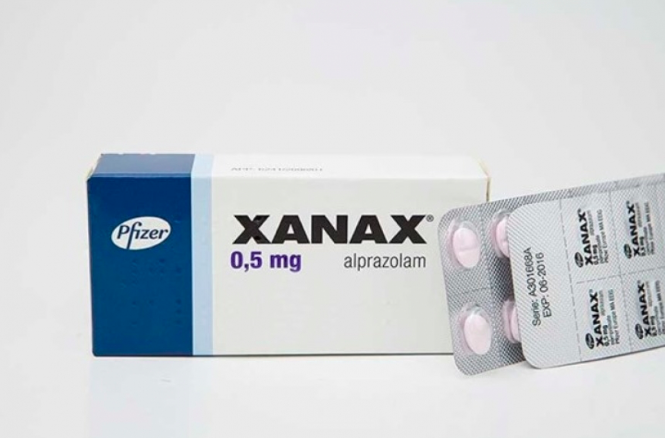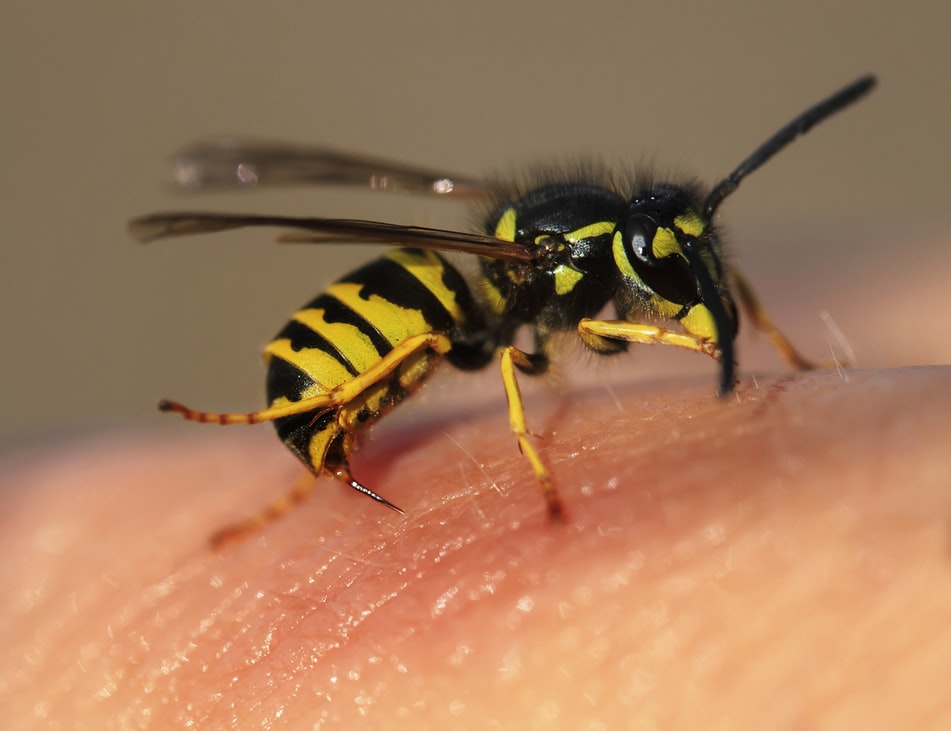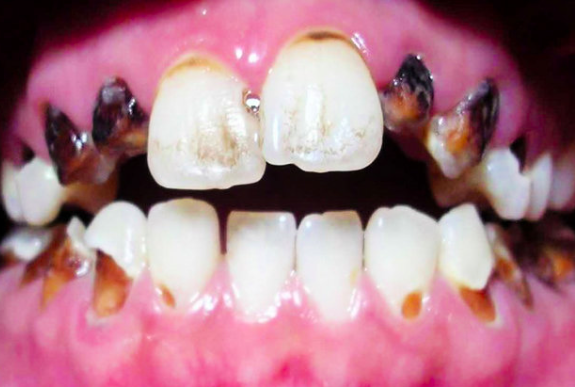
Table of Contents
Vaping and lung damage. What is the relationship? Though still somewhat of a mystery, recent reports have shed more light on this.
The Centers for Disease Control and Prevention (CDC) has been vocal about the harmful effects of vaping. A recent report of over 500 related illnesses and seven deaths is enough to make one ponder.
In recent times, there has been a switch from cigarette smoking to e-cigarettes. This switch is in an attempt to avoid the risks related to smoking. The association of diseases like cancer and lung disease with cigarette smoking is well known. On the other hand, e-cigs have been considered a safer alternative. So why the deaths and lung damage?
E-cigarettes were first introduced commercially in 2008. At this time, it appears to be a case of the wild, wild west with e-cigarettes and vaping. Regulations are minimal.
The popularity of e-cigarettes continues to rise. This increase is even more so, amongst teenagers. The cool designs and fruity flavors further increase their appeal. The United States Surgeon General has declared that the rise in youth e-cigarette use is a public health emergency. It’s that bad!
Nicotine is a component of e-cigs. According to the CDC, nicotine is as addictive as cocaine, alcohol, and heroin! Perhaps, it is time to look closely at better regulating electronic cigarettes.
 Vaping refers to the use of battery-powered electronic cigarettes. The use of e-cigarettes helps with the ingestion of nicotine without the smoke and tar that you get from burning tobacco. These electronic devices use a battery to heat a liquid containing nicotine. The heat produces an aerosol that the user inhales. For this reason, it is advertised as a safe way to quit smoking. We now, however, know that vaping has its ill effects.
Vaping refers to the use of battery-powered electronic cigarettes. The use of e-cigarettes helps with the ingestion of nicotine without the smoke and tar that you get from burning tobacco. These electronic devices use a battery to heat a liquid containing nicotine. The heat produces an aerosol that the user inhales. For this reason, it is advertised as a safe way to quit smoking. We now, however, know that vaping has its ill effects.
Nicotine is the main product in e-cigarettes. Of recent, though, vaping other substances such as tetrahydrocannabinol (THC) has become more common. THC is one of the active ingredients found in cannabis (marijuana).
There is suspicion of some even more dangerous drugs finding their way into e-cigarettes. According to some reports, these illicit substances may be responsible for some of the recent deaths from vaping.
E-cigarettes were introduced to help people quit smoking cigarettes. It removes the lingering smell and chemical compounds found in cigarettes. Recent reports and studies have, however, shown that vaping has its downsides.
E-cigarettes contain a battery, a heating element, a place to hold the liquid, and an inhaler piece. The device heats the liquid to produce an aerosol that is inhaled into the lungs by the user. These devices have the following common names:
These devices produce an aerosol that contains many harmful substances. The aerosol from vaping comes from heating the liquid containing various chemicals. These substances include nicotine, flavorings, and other additives (e.g., solvents, oils, and propellants). It is these substances that contribute to lung damage from vaping.
Some of such dangerous compounds found in the aerosol are:
E-cigarettes usually have a mixture of nicotine, glycerin, propylene glycol, and flavorings. These components, in addition to the other chemical ingredients, are harmful enough. Add THC and other dangerous substances to these, and it’s even more of a recipe for bodily damage.
Even though vaping is generally considered to be safer than cigarette smoking, there are some dangers. In addition to lung damage, vaping also causes other health issues.
Here are a few reasons why vaping is dangerous:
Did you know that people can now hack their devices to allow for a greater release of nicotine and heat? This process is unhealthy not just for the person vaping, but also those around them. Due to the possible secondhand effects of vaping, there is a World Health Organization ban on the use of vaporizers indoors.
So, how bad is vaping? Bad enough to kill! As of September 2019, there have been seven related deaths in the United States. Unfortunately, it is still unknown exactly why these deaths are happening. There are a few theories, however.
One suggestion is that lower-end products have been responsible for the fatalities. Also, there are concerns regarding injecting dangerous substances into the liquid component of e-cigs. What stands out so far though is the fact that quite a few of these deaths are related to vaping products containing THC.
In addition to the lung damage and deaths from vaping, one of the most significant health risks is the unknown. Vaping is still relatively new, and scientists do not exactly know what the long term effects are.
So, how does the lung illness from vaping present? There have been several case reports. At this time, the consensus is that the chemicals from vaping cause Acute Exogenous Lipoid Pneumonia.
Here are a few take-home points from recent case reports:
 In November 2018, the FDA took action to limit most sales of flavored e-cigs to only vaping stores and online retailers. Large department stores like Walmart have also stopped selling these products.
In November 2018, the FDA took action to limit most sales of flavored e-cigs to only vaping stores and online retailers. Large department stores like Walmart have also stopped selling these products.
The e-cigarette industry is also taking regulatory steps. As of 2018, Juul (a brand producing e-cigs) no longer stocks stores with appealing flavors like mango, fruit, creme, and cucumber. Instead, they now only provide tobacco, menthol, and mint flavors. Juul, however, plans to continue selling the fruity flavors on its website but would ensure buyers were 21 years or older.
The situation is so alarming that the CDC and FDA are closely monitoring the status and giving regular updates. Not surprising considering there are now over 500 people ill from lung damage, and seven related deaths – as of September 2019. In fact, with directives from the U.S. president, the FDA plans to issue new regulations. These policies aim to ban all vaping products that taste like anything other than tobacco.
Electronic cigarettes go by various names. The common ones are e-cigarettes, e-cigs, vapes, e-hookahs, vape pens, and electronic nicotine delivery systems (ENDS). Using an e-cigarette is commonly known as vaping.
E-cigs work by heating a liquid to produce an aerosol that users inhale into their lungs. In addition to nicotine, electronic cigarettes can be used to deliver tetrahydrocannabinol (THC). This substance is one of the principal ingredients in cannabis (marijuana). Users of e-cigs can also add other illicit drugs to the devices.
Initially, e-cigarettes were made with the hope that it would serve as a safer alternative to cigarette smoking. Evidence of lung damage and recent deaths, however, raises questions on the safety of vaping. As of September 2019, there have been over 500 severe lung illnesses and seven confirmed deaths in the U.S.
The recent episodes of lung damage and deaths are still under investigation. Adulteration, use of lower-end products, and vaping THC-containing products are some possible explanations.
In addition to the more common knowledge of damage to the lungs, vaping also has other adverse effects on the body. Vaping can cause dizziness, irregular heartbeats, and high blood pressure. It can also affect the immune system. Studies show that vaping affects 358 genes that help fight infection!
At this time, the CDC recommends people consider not using e-cigarettes. For those who continue to use, the advise is to avoid buying e-cigarettes off the streets, avoid modifying them or adding any substances to them.
Share this article to educate others on the harmful effects of vaping. Leave a comment below to share experiences for and against the use of electronic cigarettes.
Subscribe to get our latest content by email.
The entire content of AddictionBlueprint, including content on drugs and alcohol, medications, therapies, facilities, spotlights, recommendations, and other features is for informational purposes only. It is not intended to be a substitute for professional medical advice, diagnosis or treatment. This does not constitute a physician-patient relationship. Please seek the advice of your physician or other qualified health providers regarding your addiction, mental and medical issues.

May 2019

May 2019

Jun 2019

Jun 2019

Jun 2019

Jun 2019

Jul 2019

Jul 2019

Jul 2019

Aug 2019

Sep 2019

Oct 2019

Sep 2019

Oct 2019

Nov 2019

Nov 2019

Nov 2019

Jan 2020

Jan 2020

Jan 2020

Feb 2020

May 2019
As of 9/24/19, the total number of reported deaths is up to 9!
Centers for Disease Control and Prevention has announced a “breakthrough” in the search for a cause of deaths from vaping. The first identified toxicant is vitamin E acetate.
It was an interesting topic about usage of Vape and hookah. This was a fun read. Thank you for giving the well define blog to read. I have also found this resource Irresistiblevapehouse.co.nz useful and its related to what you are mentioning.
Your blog illuminates my day like a ray of light. Thank you for spreading positivity with your words.
проститутки ебург
https://www.mainmovs.com/
Thanks for the sensible critique. Me and my neighbor were just preparing to do some research about this. We got a grab a book from our local library but I think I learned more clear from this post. I am very glad to see such wonderful info being shared freely out there.
This should be discussed with a health care provider sex with viagra
As I website owner I believe the subject matter here is real fantastic, thanks for your efforts.
Today, I went to the beach with my kids. I found a sea shell and gave it to my 4 year old daughter and said “You can hear the ocean if you put this to your ear.” She placed the shell to her ear and screamed. There was a hermit crab inside and it pinched her ear. She never wants to go back! LoL I know this is completely off topic but I had to tell someone!
You’re in point of fact a good webmaster. The
website loading pace is incredible. It seems that you are
doing any distinctive trick. Furthermore, the contents are masterpiece.
you’ve performed a magnificent activity in this subject!
Similar here: najtańszy sklep and also here: Najtańszy sklep
Thank you a lot for sharing this with all folks you actually
understand what you are talking about! Bookmarked. Please additionally seek advice from my website =).
We could have a hyperlink exchange contract among us
Good info. Lucky me I reach on your website by accident, I bookmarked it.
Hey! Do you know if they make any plugins
to help with Search Engine Optimization? I’m trying to get my blog to rank for some targeted
keywords but I’m not seeing very good success. If you know of any please share.
Kudos! You can read similar text here: E-commerce
Hello there! Do you know if they make any plugins to
help with SEO? I’m trying to get my blog to rank for some targeted keywords
but I’m not seeing very good success. If you know of any please share.
Many thanks! You can read similar blog here: Sklep internetowy
magnificent submit, very informative. I wonder why the opposite specialists
of this sector don’t understand this. You must proceed your writing.
I am sure, you’ve a great readers’ base already!
Hey! Do you know if they make any plugins to assist with
Search Engine Optimization? I’m trying to get my
blog to rank for some targeted keywords but I’m not seeing very good results.
If you know of any please share. Thanks! You can read similar art here:
Najlepszy sklep
I was just looking for this information for a while. After six hours of continuous Googleing, at last I got it in your website. I wonder what is the lack of Google strategy that do not rank this kind of informative sites in top of the list. Normally the top web sites are full of garbage.
Excellent read, I just passed this onto a friend who was doing some research on that. And he just bought me lunch because I found it for him smile Therefore let me rephrase that: Thanks for lunch! “A thing is not necessarily true because a man dies for it.” by Oscar Fingall O’Flahertie Wills Wilde.
Hello, i think that i saw you visited my web site thus i got here to “return the favor”.I’m trying to to find things to enhance my web site!I suppose its adequate to use some of your concepts!!
демонтаж москва
https://demontagmoskva.ru/
Hey there! Do you know if they make any plugins to
assist with Search Engine Optimization? I’m trying to get my site to rank for
some targeted keywords but I’m not seeing very good success.
If you know of any please share. Appreciate it! You can read similar text here:
Scrapebox List
Здравствуйте!
Диплом Купить Спб
Они помогут избежать сурового наказания и неприятных последствий. Это медицинское учреждение, которое дало направление (например, взрослая поликлиника).https://saksx-diploms-srednee24.com/ Все дипломы юристов, которые мы продаем, имеют официальные документы. Одной из причин, по которой люди хотят приобрести высшее образование быстро, является возможность быстрой трудоустройства и карьерного роста.
Здравствуйте!
Было ли у вас опыт написания дипломной работы в крайне сжатые сроки? Это действительно требует огромной ответственности и трудоемкости, однако важно сохранять упорство и продолжать активно участвовать в учебном процессе, как я это делаю.
Для тех, кто умеет эффективно искать и анализировать информацию в интернете, это действительно помогает в процессе согласования и написания дипломной работы. Больше не нужно тратить время на посещение библиотек или организацию встреч с научным руководителем. Здесь, на этом ресурсе, предоставлены надежные данные для заказа и написания дипломных и курсовых работ с гарантией качества и доставкой по всей России. Можете ознакомиться с предложениями по ссылке https://rudik-diploms365.com, это проверенный источник!
https://gruppa365-diploms-srednee.com/
купить аттестат
купить диплом университета
купить диплом специалиста
купить диплом Гознак
купить аттестат школы
Желаю любому положительных отметок!
Very good information. Lucky me I found your site by accident (stumbleupon).
I have saved as a favorite for later!
Привет всем!
Было ли у вас когда-нибудь такое, что приходилось писать дипломную работу в сжатые сроки? Это действительно требует огромной ответственности и напряженных усилий, но важно не сдаваться и продолжать активно заниматься учебными процессами, чем я и занимаюсь.
Для тех, кто умеет искать и анализировать информацию в интернете, это действительно помогает в процессе согласования и написания дипломной работы. Не нужно тратить время на посещение библиотек или организацию встреч с дипломным руководителем. Здесь представлены надежные данные для заказа и написания дипломных и курсовых работ с гарантией качества и доставкой по России. Можете ознакомиться с предложениями по ссылке , проверено!
https://landik-diploms-srednee24.com/
купить диплом нового образца
купить диплом о среднем специальном
купить диплом специалиста
где купить диплом
купить диплом Гознак
Желаю любому нужных отметок!
Отечественный изготовитель реализует блины на ресурсе https://diski-dlya-shtang.ru/ для усиленной работы в коммерческих тренажерных центрах и в домашних условиях. Завод из России создает диски разного посадочного диаметра и любого востребованного веса для разборных штанг. Рекомендуем к заказу обрезиненные блины для силовых тренировок. Они не скользят, не гремят и более безопасны. Изготавливаемые изделия не нуждаются в постоянном обслуживании и рассчитаны на длительную эксплуатацию в дома, в квартире. Рекомендуем большой каталог профессиональных блинов с любым классом покрытия. Приобретите отягощения с нужной массой и посадочным диаметром по доступным ценам напрямую у компании-производителя.
На сегодняшний день, когда диплом становится началом успешной карьеры в любой сфере, многие стараются найти максимально быстрый путь получения образования. Наличие официального документа переоценить просто невозможно. Ведь диплом открывает двери перед любым человеком, который желает начать трудовую деятельность или учиться в университете.
Наша компания предлагает оперативно получить этот важный документ. Вы можете заказать диплом, что будет удачным решением для человека, который не смог закончить обучение или потерял документ. Все дипломы изготавливаются с особой аккуратностью, вниманием к мельчайшим нюансам. На выходе вы сможете получить полностью оригинальный документ.
Преимущество данного подхода заключается не только в том, что вы сможете быстро получить диплом. Процесс организован комфортно, с нашей поддержкой. Начиная от выбора нужного образца до точного заполнения личных данных и доставки по стране — все под абсолютным контролем квалифицированных мастеров.
Таким образом, для тех, кто пытается найти быстрый способ получить необходимый документ, наша компания предлагает выгодное решение. Приобрести диплом – значит избежать продолжительного процесса обучения и сразу переходить к достижению собственных целей, будь то поступление в ВУЗ или начало карьеры.
[Link deleted]
[Link deleted]
[Link deleted]
[Link deleted]
[Link deleted]
В нашем обществе, где диплом – это начало отличной карьеры в любом направлении, многие ищут максимально быстрый путь получения качественного образования. Факт наличия официального документа сложно переоценить. Ведь именно он открывает дверь перед любым человеком, желающим вступить в профессиональное сообщество или учиться в любом ВУЗе.
Предлагаем оперативно получить этот важный документ. Вы имеете возможность приобрести диплом, и это является выгодным решением для человека, который не смог закончить образование, утратил документ или хочет исправить плохие оценки. Все дипломы изготавливаются аккуратно, с максимальным вниманием к мельчайшим элементам. В итоге вы сможете получить документ, 100% соответствующий оригиналу.
Превосходство данного решения состоит не только в том, что можно быстро получить свой диплом. Процесс организовывается удобно, с нашей поддержкой. От выбора подходящего образца до консультаций по заполнению персональной информации и доставки в любое место страны — все под абсолютным контролем опытных специалистов.
Всем, кто ищет быстрый и простой способ получить требуемый документ, наша компания предлагает отличное решение. Купить диплом – это значит избежать продолжительного обучения и не теряя времени переходить к достижению собственных целей: к поступлению в ВУЗ или к началу трудовой карьеры.
[Link deleted]
[Link deleted]
[Link deleted]
[Link deleted]
[Link deleted]
В современном мире, где диплом – это начало успешной карьеры в любой сфере, многие ищут максимально быстрый путь получения образования. Факт наличия официального документа об образовании трудно переоценить. Ведь именно диплом открывает двери перед каждым человеком, который стремится вступить в сообщество профессиональных специалистов или учиться в университете.
Наша компания предлагает быстро получить любой необходимый документ. Вы сможете купить диплом, и это будет отличным решением для всех, кто не смог закончить обучение, потерял документ или хочет исправить плохие оценки. диплом изготавливается аккуратно, с максимальным вниманием к мельчайшим деталям. На выходе вы получите продукт, максимально соответствующий оригиналу.
Преимущества этого подхода состоят не только в том, что можно максимально быстро получить свой диплом. Весь процесс организован просто и легко, с нашей поддержкой. От выбора требуемого образца документа до правильного заполнения персональной информации и доставки в любой регион страны — все будет находиться под полным контролем качественных мастеров.
Для всех, кто ищет оперативный способ получить требуемый документ, наша компания предлагает отличное решение. Заказать диплом – значит избежать продолжительного процесса обучения и не теряя времени переходить к достижению личных целей: к поступлению в университет или к началу удачной карьеры.
[Link deleted]
[Link deleted]
[Link deleted]
[Link deleted]
[Link deleted]
<a href=[Link deleted]
На сегодняшний день, когда диплом – это начало отличной карьеры в любом направлении, многие ищут максимально быстрый путь получения качественного образования. Факт наличия документа об образовании трудно переоценить. Ведь именно он открывает дверь перед каждым человеком, желающим начать трудовую деятельность или учиться в любом институте.
Мы предлагаем быстро получить этот необходимый документ. Вы имеете возможность заказать диплом старого или нового образца, и это будет отличным решением для всех, кто не смог завершить образование или утратил документ. Все дипломы выпускаются аккуратно, с максимальным вниманием ко всем деталям. На выходе вы сможете получить документ, полностью соответствующий оригиналу.
Превосходство такого подхода состоит не только в том, что можно оперативно получить диплом. Процесс организован удобно и легко, с нашей поддержкой. От выбора нужного образца диплома до точного заполнения личной информации и доставки по стране — все под полным контролем наших специалистов.
В результате, для тех, кто хочет найти оперативный способ получения необходимого документа, наша компания готова предложить отличное решение. Приобрести диплом – значит избежать длительного процесса обучения и не теряя времени перейти к своим целям, будь то поступление в ВУЗ или старт успешной карьеры.
[Link deleted]
[Link deleted]
[Link deleted]
[Link deleted]
[Link deleted]
<a href=[Link deleted]the complex world of chronometers
Understanding COSC Certification and Its Importance in Watchmaking
COSC Accreditation and its Stringent Standards
Controle Officiel Suisse des Chronometres, or the Official Swiss Chronometer Testing Agency, is the authorized Switzerland testing agency that certifies the precision and accuracy of wristwatches. COSC certification is a mark of excellent craftsmanship and reliability in chronometry. Not all watch brands follow COSC validation, such as Hublot, which instead adheres to its proprietary strict standards with mechanisms like the UNICO calibre, achieving equivalent accuracy.
The Art of Precision Timekeeping
The central mechanism of a mechanical watch involves the spring, which provides power as it loosens. This system, however, can be prone to environmental elements that may affect its precision. COSC-certified mechanisms undergo strict testing—over fifteen days in various conditions (five positions, 3 temperatures)—to ensure their resilience and reliability. The tests measure:
Mean daily rate accuracy between -4 and +6 seconds.
Mean variation, highest variation rates, and effects of temperature variations.
Why COSC Validation Is Important
For watch aficionados and collectors, a COSC-certified watch isn’t just a item of technology but a demonstration to enduring quality and precision. It represents a timepiece that:
Presents excellent reliability and precision.
Offers assurance of quality across the whole construction of the timepiece.
Is likely to retain its value better, making it a smart choice.
Popular Timepiece Brands
Several renowned brands prioritize COSC certification for their timepieces, including Rolex, Omega, Breitling, and Longines, among others. Longines, for instance, presents collections like the Record and Spirit, which feature COSC-validated mechanisms equipped with advanced substances like silicon equilibrium suspensions to enhance resilience and efficiency.
Historical Context and the Evolution of Chronometers
The idea of the chronometer originates back to the requirement for exact chronometry for navigation at sea, highlighted by John Harrison’s work in the eighteenth century. Since the official establishment of Controle Officiel Suisse des Chronometres in 1973, the certification has become a benchmark for assessing the precision of luxury watches, sustaining a legacy of superiority in horology.
Conclusion
Owning a COSC-certified watch is more than an aesthetic choice; it’s a dedication to excellence and accuracy. For those valuing accuracy above all, the COSC certification provides tranquility of mind, ensuring that each certified timepiece will perform dependably under various circumstances. Whether for individual contentment or as an investment decision, COSC-certified timepieces distinguish themselves in the world of watchmaking, carrying on a tradition of careful timekeeping.
<a href=[Link deleted]güncel
Son Dönemsel En Büyük Gözde Bahis Sitesi: Casibom
Casino oyunlarını sevenlerin artık duymuş olduğu Casibom, en son dönemde adından çoğunlukla söz ettiren bir iddia ve kumarhane platformu haline geldi. Ülkemizin en mükemmel bahis web sitelerinden biri olarak tanınan Casibom’un haftalık olarak göre değişen açılış adresi, sektörde oldukça taze olmasına rağmen güvenilir ve kazanç sağlayan bir platform olarak tanınıyor.
Casibom, rakiplerini geride kalarak eski casino web sitelerinin önüne geçmeyi başarıyor. Bu alanda eski olmak önemlidir olsa da, oyuncularla iletişim kurmak ve onlara erişmek da aynı miktar önemlidir. Bu noktada, Casibom’un 7/24 servis veren canlı olarak destek ekibi ile rahatça iletişime geçilebilir olması önemli bir artı sağlıyor.
Hızla büyüyen oyuncuların kitlesi ile ilgi çekici olan Casibom’un gerisindeki başarı faktörleri arasında, yalnızca kumarhane ve gerçek zamanlı casino oyunlarına sınırlı olmayan geniş bir hizmet yelpazesi bulunuyor. Spor bahislerinde sunduğu geniş alternatifler ve yüksek oranlar, oyuncuları ilgisini çekmeyi başarmayı sürdürüyor.
Ayrıca, hem spor bahisleri hem de casino oyunları katılımcılara yönelik sunulan yüksek yüzdeli avantajlı promosyonlar da dikkat çekiyor. Bu nedenle, Casibom çabucak piyasada iyi bir pazarlama başarısı elde ediyor ve büyük bir oyuncu kitlesi kazanıyor.
Casibom’un kazanç sağlayan ödülleri ve tanınırlığı ile birlikte, web sitesine üyelik nasıl sağlanır sorusuna da atıfta bulunmak elzemdir. Casibom’a mobil cihazlarınızdan, bilgisayarlarınızdan veya tabletlerinizden internet tarayıcı üzerinden rahatça erişilebilir. Ayrıca, web sitesinin mobil cihazlarla uyumlu olması da büyük önem taşıyan bir artı getiriyor, çünkü şimdi pratikte herkesin bir akıllı telefonu var ve bu cihazlar üzerinden hızlıca ulaşım sağlanabiliyor.
Mobil tabletlerinizle bile yolda gerçek zamanlı iddialar alabilir ve yarışmaları canlı olarak izleyebilirsiniz. Ayrıca, Casibom’un mobil cihazlarla uyumlu olması, ülkemizde kumarhane ve casino gibi yerlerin meşru olarak kapatılmasıyla birlikte bu tür platformlara girişin büyük bir yolunu oluşturuyor.
Casibom’un güvenilir bir bahis sitesi olması da gereklidir bir fayda sağlıyor. Belgeli bir platform olan Casibom, kesintisiz bir şekilde eğlence ve kazanç sağlama imkanı getirir.
Casibom’a üye olmak da son derece rahatlatıcıdır. Herhangi bir belge gereksinimi olmadan ve bedel ödemeden web sitesine rahatça kullanıcı olabilirsiniz. Ayrıca, platform üzerinde para yatırma ve çekme işlemleri için de çok sayıda farklı yöntem bulunmaktadır ve herhangi bir kesim ücreti isteseniz de alınmaz.
Ancak, Casibom’un güncel giriş adresini izlemek de elzemdir. Çünkü canlı iddia ve oyun platformlar popüler olduğu için sahte web siteleri ve dolandırıcılar da ortaya çıkmaktadır. Bu nedenle, Casibom’un sosyal medya hesaplarını ve güncel giriş adresini düzenli aralıklarla kontrol etmek önemlidir.
Sonuç, Casibom hem emin hem de kazandıran bir bahis web sitesi olarak dikkat çekici. Yüksek bonusları, geniş oyun seçenekleri ve kullanıcı dostu mobil uygulaması ile Casibom, kumarhane sevenler için mükemmel bir platform sağlar.
GichardCiz
Привет всем!
Продолжая работу над дипломом, я все больше опираюсь на помощь, предоставляемую интернетом.
Приобретайте диплом университета без предоплаты у нас с доставкой в любой город России, гарантированное качество и безопасность.
Желаю каждому прекрасных отметок!
купить диплом дизайнера
купить свидетельство о рождении
купить диплом в вологде
купить дипломы о высшем
купить диплом в армавире
<a href=[Link deleted]диплом в анжеро-судженске
<a href=[Link deleted]дипломы о высшем с занесением
<a href=[Link deleted]диплом в сургуте
<a href=[Link deleted]диплом в новоалтайске
<a href=[Link deleted]дипломы купить
TimsothyGrils
Добрый день!
Диплом стал для меня настоящим испытанием из-за просроченных сроков.
На нашем сайте вы можете купить диплом ВУЗа, недорого, с оплатой после получения, поддержка 24/7.
Желаю для каждого положительных отметок!
купить диплом в кирове
купить диплом в ейске
купить диплом логопеда
купить диплом в кисловодске
купить диплом инженера
<a href=[Link deleted]диплом в россоши
<a href=[Link deleted]диплом в екатеринбурге
<a href=[Link deleted]диплом в новочеркасске
<a href=[Link deleted]диплом в туймазы
<a href=[Link deleted]диплом в губкине
<a href=[Link deleted]watches
Understanding COSC Validation and Its Importance in Watchmaking
COSC Certification and its Rigorous Standards
Controle Officiel Suisse des Chronometres, or the Official Swiss Chronometer Testing Agency, is the official Swiss testing agency that verifies the accuracy and precision of timepieces. COSC validation is a symbol of superior craftsmanship and dependability in timekeeping. Not all timepiece brands pursue COSC certification, such as Hublot, which instead adheres to its proprietary demanding criteria with mechanisms like the UNICO, attaining comparable accuracy.
The Art of Exact Timekeeping
The core system of a mechanized watch involves the mainspring, which delivers power as it unwinds. This mechanism, however, can be susceptible to environmental factors that may influence its accuracy. COSC-certified mechanisms undergo demanding testing—over fifteen days in various conditions (five positions, 3 temperatures)—to ensure their durability and dependability. The tests evaluate:
Mean daily rate precision between -4 and +6 seconds.
Mean variation, maximum variation rates, and impacts of temperature changes.
Why COSC Certification Matters
For watch enthusiasts and collectors, a COSC-certified timepiece isn’t just a piece of tech but a demonstration to enduring quality and precision. It represents a watch that:
Offers outstanding dependability and accuracy.
Ensures assurance of superiority across the entire construction of the watch.
Is likely to maintain its value better, making it a wise choice.
Famous Timepiece Brands
Several renowned manufacturers prioritize COSC validation for their timepieces, including Rolex, Omega, Breitling, and Longines, among others. Longines, for instance, presents collections like the Record and Soul, which feature COSC-validated mechanisms equipped with cutting-edge materials like silicon equilibrium suspensions to boost resilience and performance.
Historical Context and the Evolution of Chronometers
The idea of the timepiece originates back to the requirement for accurate chronometry for navigation at sea, highlighted by John Harrison’s work in the 18th cent. Since the formal foundation of COSC in 1973, the validation has become a yardstick for evaluating the accuracy of luxury timepieces, continuing a tradition of excellence in horology.
Conclusion
Owning a COSC-accredited timepiece is more than an aesthetic selection; it’s a dedication to quality and accuracy. For those valuing accuracy above all, the COSC validation provides tranquility of mind, guaranteeing that each validated watch will operate dependably under various circumstances. Whether for individual satisfaction or as an investment, COSC-certified watches stand out in the world of horology, carrying on a legacy of meticulous chronometry.
Do you have a spam problem on this blog; I also am a blogger, and I was wanting to know your situation; we have created some nice methods and we are looking to swap techniques with other folks, why not shoot me an e-mail if interested.
<a href=[Link deleted]стоит резиновая баба
로드스탁과의 레버리지 방식의 스탁: 투자법의 신규 분야
로드스탁에서 제공하는 레버리지 방식의 스탁은 주식 투자법의 한 방식으로, 상당한 이익율을 목표로 하는 투자자들에게 매혹적인 옵션입니다. 레버리지 사용을 사용하는 이 방법은 투자하는 사람들이 자신의 자본을 초과하는 투자금을 투입할 수 있도록 하여, 증권 장에서 더욱 큰 힘을 가질 수 있는 기회를 줍니다.
레버리지 스탁의 기본 원칙
레버리지 방식의 스탁은 일반적으로 자본을 대여하여 운용하는 방식입니다. 예를 들어, 100만 원의 자본으로 1,000만 원 상당의 증권을 구매할 수 있는데, 이는 투자자가 기본적인 자본보다 훨씬 더 많은 주식을 취득하여, 증권 가격이 증가할 경우 관련된 훨씬 더 큰 이익을 가져올 수 있게 해줍니다. 그렇지만, 주식 값이 내려갈 경우에는 그 피해 또한 커질 수 있으므로, 레버리지를 사용할 때는 신중하게 생각해야 합니다.
투자 전략과 레버리지
레버리지는 특히 성장 가능성이 높은 기업에 적용할 때 효과적입니다. 이러한 회사에 높은 비율을 통해 투자하면, 잘 될 경우 막대한 수익을 얻을 수 있지만, 반대 경우의 경우 많은 리스크도 감수하게 됩니다. 그러므로, 투자하는 사람은 자신의 위험 관리 능력을 가진 장터 분석을 통해, 어느 기업에 얼마만큼의 투자금을 적용할지 결정해야 합니다.
레버리지 사용의 이점과 위험 요소
레버리지 방식의 스탁은 상당한 이익을 보장하지만, 그만큼 높은 위험도 동반합니다. 주식 시장의 변동성은 추정이 어렵기 때문에, 레버리지를 사용할 때는 늘 상장 동향을 면밀히 주시하고, 손실을 최소로 줄일 수 있는 방법을 구성해야 합니다.
맺음말: 신중한 결정이 필요
로드스탁을 통해 공급하는 레버리지 스탁은 막강한 투자 도구이며, 적절히 사용하면 많은 수익을 가져다줄 수 있습니다. 그러나 큰 위험도 고려해야 하며, 투자 결정은 충분한 정보와 세심한 고려 후에 이루어져야 합니다. 투자하는 사람의 재정 상황, 위험을 감수하는 능력, 그리고 시장 상황을 생각한 조화로운 투자 전략이 중요하며.
В современном мире, где диплом является началом отличной карьеры в любой сфере, многие ищут максимально быстрый путь получения образования. Наличие официального документа переоценить просто невозможно. Ведь диплом открывает дверь перед любым человеком, который желает вступить в профессиональное сообщество или продолжить обучение в ВУЗе.
В данном контексте наша компания предлагает оперативно получить любой необходимый документ. Вы имеете возможность заказать диплом, что будет удачным решением для человека, который не смог закончить обучение, утратил документ или желает исправить свои оценки. Любой диплом изготавливается аккуратно, с особым вниманием ко всем элементам. На выходе вы получите документ, 100% соответствующий оригиналу.
Превосходство подобного решения заключается не только в том, что можно оперативно получить диплом. Весь процесс организован удобно, с профессиональной поддержкой. От выбора требуемого образца до точного заполнения персональных данных и доставки по России — все будет находиться под абсолютным контролем квалифицированных мастеров.
Всем, кто хочет найти оперативный способ получить необходимый документ, наша услуга предлагает выгодное решение. Приобрести диплом – это значит избежать продолжительного процесса обучения и не теряя времени перейти к своим целям, будь то поступление в университет или старт карьеры.
[Link deleted]
<a href=[Link deleted]
En Son Dönemin En Fazla Gözde Kumarhane Platformu: Casibom
Casino oyunlarını sevenlerin artık duymuş olduğu Casibom, nihai dönemde adından çoğunlukla söz ettiren bir şans ve oyun sitesi haline geldi. Ülkemizdeki en mükemmel kumarhane sitelerinden biri olarak tanınan Casibom'un haftalık olarak olarak değişen giriş adresi, piyasada oldukça taze olmasına rağmen itimat edilir ve kar getiren bir platform olarak öne çıkıyor.
Casibom, muadillerini geride bırakarak eski casino web sitelerinin geride bırakmayı başarmayı sürdürüyor. Bu sektörde eski olmak önemlidir olsa da, oyunculardan etkileşimde olmak ve onlara temasa geçmek da aynı miktar önemlidir. Bu durumda, Casibom'un her saat yardım veren canlı destek ekibi ile rahatça iletişime ulaşılabilir olması büyük bir fayda sunuyor.
Hızlıca büyüyen oyuncu kitlesi ile dikkat çekici olan Casibom'un arkasındaki başarım faktörleri arasında, sadece ve yalnızca casino ve gerçek zamanlı casino oyunlarına sınırlı olmayan geniş bir hizmet yelpazesi bulunuyor. Sporcular bahislerinde sunduğu geniş alternatifler ve yüksek oranlar, katılımcıları ilgisini çekmeyi başarılı oluyor.
Ayrıca, hem sporcular bahisleri hem de kumarhane oyunları oyuncularına yönlendirilen sunulan yüksek yüzdeli avantajlı promosyonlar da ilgi çekici. Bu nedenle, Casibom kısa sürede piyasada iyi bir pazarlama başarısı elde ediyor ve büyük bir oyuncuların kitlesi kazanıyor.
Casibom'un kar getiren promosyonları ve ünlülüğü ile birlikte, platforma üyelik hangi yollarla sağlanır sorusuna da bahsetmek elzemdir. Casibom'a hareketli cihazlarınızdan, bilgisayarlarınızdan veya tabletlerinizden internet tarayıcı üzerinden kolayca erişilebilir. Ayrıca, platformun mobil uyumlu olması da büyük bir artı getiriyor, çünkü artık hemen hemen herkesin bir akıllı telefonu var ve bu akıllı telefonlar üzerinden hızlıca ulaşım sağlanabiliyor.
Taşınabilir cihazlarınızla bile yolda gerçek zamanlı iddialar alabilir ve yarışmaları canlı olarak izleyebilirsiniz. Ayrıca, Casibom'un mobil cihazlarla uyumlu olması, memleketimizde kumarhane ve oyun gibi yerlerin kanuni olarak kapatılmasıyla birlikte bu tür platformlara girişin önemli bir yolunu oluşturuyor.
Casibom'un itimat edilir bir kumarhane platformu olması da önemlidir bir avantaj sunuyor. Ruhsatlı bir platform olan Casibom, kesintisiz bir şekilde keyif ve kazanç elde etme imkanı getirir.
Casibom'a üye olmak da oldukça kolaydır. Herhangi bir belge şartı olmadan ve ücret ödemeden platforma kolaylıkla kullanıcı olabilirsiniz. Ayrıca, site üzerinde para yatırma ve çekme işlemleri için de çok sayıda farklı yöntem bulunmaktadır ve herhangi bir kesim ücreti alınmamaktadır.
Ancak, Casibom'un güncel giriş adresini takip etmek de elzemdir. Çünkü gerçek zamanlı bahis ve casino siteleri popüler olduğu için yalancı platformlar ve dolandırıcılar da belirmektedir. Bu nedenle, Casibom'un sosyal medya hesaplarını ve güncel giriş adresini düzenli aralıklarla kontrol etmek önemlidir.
Sonuç, Casibom hem itimat edilir hem de kazandıran bir kumarhane sitesi olarak dikkat çekiyor. Yüksek ödülleri, geniş oyun seçenekleri ve kullanıcı dostu mobil uygulaması ile Casibom, kumarhane tutkunları için ideal bir platform sunuyor.
В нашем мире, где диплом – это начало успешной карьеры в любом направлении, многие ищут максимально быстрый и простой путь получения образования. Наличие официального документа об образовании переоценить попросту невозможно. Ведь диплом открывает двери перед всеми, кто стремится вступить в сообщество профессионалов или учиться в ВУЗе.
В данном контексте наша компания предлагает очень быстро получить этот важный документ. Вы имеете возможность купить диплом, что становится отличным решением для человека, который не смог закончить обучение или утратил документ. дипломы выпускаются аккуратно, с особым вниманием к мельчайшим элементам. На выходе вы сможете получить документ, 100% соответствующий оригиналу.
Преимущества такого решения состоят не только в том, что можно оперативно получить диплом. Процесс организован просто и легко, с нашей поддержкой. Начав от выбора необходимого образца документа до грамотного заполнения персональной информации и доставки по стране — все находится под абсолютным контролем качественных мастеров.
Для всех, кто ищет максимально быстрый способ получить необходимый документ, наша компания готова предложить отличное решение. Приобрести диплом – это значит избежать длительного обучения и сразу переходить к своим целям, будь то поступление в ВУЗ или начало трудовой карьеры.
[Link deleted]
<a href=[Link deleted]
로드스탁과 레버리지 방식의 스탁: 투자의 새로운 분야
로드스탁에서 공급하는 레버리지 방식의 스탁은 증권 투자법의 한 방법으로, 높은 수익률을 목표로 하는 투자자들에게 매혹적인 선택입니다. 레버리지를 이용하는 이 전략은 투자하는 사람들이 자신의 자본을 초과하는 자금을 투입할 수 있도록 하여, 주식 시장에서 훨씬 큰 작용을 가질 수 있는 기회를 공급합니다.
레버리지 스탁의 원리
레버리지 방식의 스탁은 기본적으로 자금을 차입하여 운용하는 방식입니다. 예시를 들어, 100만 원의 투자금으로 1,000만 원 상당의 주식을 취득할 수 있는데, 이는 투자자들이 일반적인 투자 금액보다 훨씬 훨씬 더 많은 주식을 구매하여, 주식 가격이 증가할 경우 상응하는 훨씬 더 큰 이익을 가져올 수 있게 해줍니다. 그러나, 주식 값이 하락할 경우에는 그 손해 또한 크게 될 수 있으므로, 레버리지 사용을 이용할 때는 신중해야 합니다.
투자 계획과 레버리지 사용
레버리지는 특히 성장 잠재력이 높은 회사에 투입할 때 도움이 됩니다. 이러한 회사에 높은 비중으로 적용하면, 성공할 경우 큰 이익을 획득할 수 있지만, 그 반대의 경우 많은 위험도 감수하게 됩니다. 그렇기 때문에, 투자하는 사람은 자신의 위험성 관리 능력과 장터 분석을 통해 통해, 어느 회사에 얼마만큼의 자본을 적용할지 선택해야 합니다.
레버리지의 이점과 위험 요소
레버리지 방식의 스탁은 상당한 수익을 보장하지만, 그만큼 상당한 위험도 따릅니다. 증권 장의 변화는 예상이 어렵기 때문에, 레버리지를 사용할 때는 언제나 장터 경향을 정밀하게 주시하고, 손실을 최소화할 수 있는 방법을 구성해야 합니다.
결론: 세심한 선택이 요구됩니다
로드스탁을 통해 제공하는 레버리지 스탁은 막강한 투자 수단이며, 적절히 활용하면 큰 수익을 벌어들일 수 있습니다. 하지만 상당한 위험도 고려해야 하며, 투자 결정은 충분히 많은 정보와 조심스러운 고려 후에 실시되어야 합니다. 투자자 본인의 재정적 상태, 리스크 감수 능력, 그리고 시장 상황을 고려한 균형 잡힌 투자 계획이 중요합니다.
В современном мире, где диплом – это начало успешной карьеры в любом направлении, многие ищут максимально быстрый и простой путь получения качественного образования. Необходимость наличия документа об образовании сложно переоценить. Ведь диплом открывает двери перед каждым человеком, который хочет вступить в сообщество квалифицированных специалистов или учиться в университете.
Мы предлагаем оперативно получить этот важный документ. Вы сможете купить диплом нового или старого образца, и это будет отличным решением для всех, кто не смог завершить образование или утратил документ. Все дипломы выпускаются с особой аккуратностью, вниманием к мельчайшим деталям, чтобы в результате получился 100% оригинальный документ.
Преимущество данного решения заключается не только в том, что можно быстро получить свой диплом. Весь процесс организовывается удобно, с нашей поддержкой. От выбора необходимого образца диплома до грамотного заполнения личной информации и доставки по России — все находится под полным контролем квалифицированных мастеров.
Для тех, кто ищет оперативный способ получения требуемого документа, наша услуга предлагает отличное решение. Приобрести диплом – это значит избежать продолжительного процесса обучения и сразу перейти к достижению своих целей, будь то поступление в ВУЗ или старт карьеры.
[Link deleted]
В современном мире, где диплом является началом удачной карьеры в любом направлении, многие ищут максимально простой путь получения качественного образования. Наличие официального документа об образовании трудно переоценить. Ведь диплом открывает двери перед людьми, стремящимися вступить в профессиональное сообщество или учиться в высшем учебном заведении.
Мы предлагаем очень быстро получить этот важный документ. Вы сможете купить диплом, что будет удачным решением для всех, кто не смог закончить обучение или утратил документ. диплом изготавливается аккуратно, с особым вниманием к мельчайшим элементам. В результате вы получите полностью оригинальный документ.
Плюсы подобного подхода состоят не только в том, что можно максимально быстро получить свой диплом. Весь процесс организовывается просто и легко, с нашей поддержкой. От выбора подходящего образца до грамотного заполнения личной информации и доставки в любое место России — все под абсолютным контролем опытных мастеров.
Для всех, кто ищет максимально быстрый способ получить необходимый документ, наша услуга предлагает отличное решение. Купить диплом – это значит избежать длительного процесса обучения и не теряя времени перейти к своим целям: к поступлению в ВУЗ или к началу трудовой карьеры.
[Link deleted]
В нашем мире, где диплом – это начало удачной карьеры в любой области, многие пытаются найти максимально быстрый путь получения качественного образования. Наличие документа об образовании трудно переоценить. Ведь диплом открывает дверь перед каждым человеком, желающим начать трудовую деятельность или учиться в ВУЗе.
Наша компания предлагает быстро получить этот необходимый документ. Вы сможете купить диплом старого или нового образца, что будет выгодным решением для человека, который не смог завершить образование или утратил документ. дипломы изготавливаются аккуратно, с особым вниманием к мельчайшим нюансам. На выходе вы сможете получить полностью оригинальный документ.
Преимущества такого подхода состоят не только в том, что можно быстро получить диплом. Процесс организовывается комфортно, с профессиональной поддержкой. От выбора необходимого образца до консультаций по заполнению личных данных и доставки в любой регион России — все под полным контролем опытных мастеров.
Для всех, кто пытается найти максимально быстрый способ получения требуемого документа, наша компания предлагает выгодное решение. Приобрести диплом – значит избежать длительного обучения и сразу переходить к достижению собственных целей, будь то поступление в университет или начало удачной карьеры.
[Link deleted]
В нашем обществе, где диплом – это начало успешной карьеры в любой сфере, многие ищут максимально быстрый и простой путь получения качественного образования. Необходимость наличия официального документа переоценить просто невозможно. Ведь именно он открывает дверь перед любым человеком, который хочет начать трудовую деятельность или продолжить обучение в высшем учебном заведении.
В данном контексте мы предлагаем оперативно получить этот необходимый документ. Вы можете заказать диплом, и это будет удачным решением для человека, который не смог завершить образование или утратил документ. диплом изготавливается с особой аккуратностью, вниманием к мельчайшим нюансам, чтобы в итоге получился продукт, полностью соответствующий оригиналу.
Превосходство подобного решения состоит не только в том, что можно оперативно получить свой диплом. Процесс организовывается комфортно, с профессиональной поддержкой. Начиная от выбора подходящего образца до грамотного заполнения личных данных и доставки по России — все находится под абсолютным контролем квалифицированных мастеров.
Для всех, кто ищет быстрый и простой способ получить необходимый документ, наша компания предлагает отличное решение. Приобрести диплом – значит избежать долгого процесса обучения и не теряя времени перейти к важным целям, будь то поступление в университет или старт трудовой карьеры.
[Link deleted]
На сегодняшний день, когда диплом – это начало успешной карьеры в любом направлении, многие стараются найти максимально простой путь получения образования. Факт наличия документа об образовании переоценить невозможно. Ведь именно диплом открывает двери перед каждым человеком, желающим вступить в сообщество профессионалов или продолжить обучение в университете.
В данном контексте мы предлагаем максимально быстро получить любой необходимый документ. Вы сможете приобрести диплом старого или нового образца, и это становится отличным решением для человека, который не смог завершить образование или утратил документ. Каждый диплом изготавливается с особой аккуратностью, вниманием к мельчайшим нюансам, чтобы в результате получился продукт, максимально соответствующий оригиналу.
Плюсы данного подхода заключаются не только в том, что можно максимально быстро получить диплом. Процесс организовывается просто и легко, с профессиональной поддержкой. Начав от выбора подходящего образца диплома до правильного заполнения персональных данных и доставки по России — все будет находиться под абсолютным контролем качественных специалистов.
Всем, кто ищет максимально быстрый способ получить требуемый документ, наша услуга предлагает отличное решение. Заказать диплом – это значит избежать продолжительного процесса обучения и не теряя времени перейти к достижению личных целей: к поступлению в университет или к началу трудовой карьеры.
[Link deleted]
[Link deleted]
[Link deleted]
[Link deleted]
[Link deleted]
На сегодняшний день, когда диплом – это начало отличной карьеры в любом направлении, многие стараются найти максимально быстрый путь получения образования. Наличие официального документа переоценить невозможно. Ведь диплом открывает дверь перед каждым человеком, желающим начать трудовую деятельность или учиться в высшем учебном заведении.
Мы предлагаем быстро получить этот важный документ. Вы имеете возможность заказать диплом нового или старого образца, что становится удачным решением для всех, кто не смог закончить обучение или потерял документ. Все дипломы производятся аккуратно, с особым вниманием к мельчайшим деталям. В результате вы сможете получить документ, полностью соответствующий оригиналу.
Преимущество подобного решения заключается не только в том, что можно максимально быстро получить свой диплом. Весь процесс организован удобно, с профессиональной поддержкой. От выбора необходимого образца до консультации по заполнению личной информации и доставки по России — все будет находиться под абсолютным контролем опытных мастеров.
Для тех, кто пытается найти быстрый и простой способ получить необходимый документ, наша компания предлагает отличное решение. Купить диплом – значит избежать продолжительного процесса обучения и не теряя времени перейти к своим целям: к поступлению в университет или к началу удачной карьеры.
[Link deleted]
Тестирование Тетер для чистоту: Каким образом обезопасить свои цифровые средства
Каждый день все больше пользователей заботятся к надежность собственных криптовалютных активов. Постоянно мошенники придумывают новые способы кражи электронных средств, и также собственники цифровой валюты являются страдающими своих интриг. Один из способов сбережения становится проверка кошельков для наличие противозаконных средств.
С какой целью это необходимо?
Прежде всего, чтобы защитить свои средства от шарлатанов а также похищенных монет. Многие специалисты сталкиваются с потенциальной угрозой утраты их финансов вследствие мошеннических схем или краж. Осмотр кошельков помогает обнаружить сомнительные операции и также предотвратить возможные убытки.
Что мы предлагаем?
Наша компания предоставляем услугу анализа электронных кошельков а также транзакций для обнаружения источника средств. Наша система исследует информацию для выявления противозаконных операций и оценки риска для вашего счета. Вследствие данной проверке, вы сможете избегать недочетов с регуляторами и предохранить себя от участия в незаконных операциях.
Как происходит процесс?
Мы работаем с первоклассными проверочными агентствами, такими как Halborn, для того чтобы гарантировать точность наших тестирований. Наша команда применяем передовые технологии для выявления опасных операций. Ваши данные проходят обработку и хранятся в соответствии с высокими стандартами безопасности и конфиденциальности.
Каким образом проверить личные Tether для чистоту?
Если вам нужно подтвердить, что ваши USDT-кошельки нетронуты, наш сервис предоставляет бесплатную проверку первых пяти кошельков. Просто передайте местоположение собственного бумажника в на нашем веб-сайте, а также наша команда предложим вам подробный отчет об его статусе.
Обезопасьте ваши активы уже сегодня!
Не подвергайте опасности попасть в жертву обманщиков или попадать в неприятную ситуацию вследствие незаконных операций. Обратитесь к нашему агентству, с тем чтобы обезопасить свои криптовалютные финансовые ресурсы и избежать проблем. Примите первый шаг к сохранности вашего криптовалютного портфеля уже сегодня!
В нашем обществе, где диплом является началом успешной карьеры в любой отрасли, многие ищут максимально быстрый и простой путь получения образования. Наличие официального документа об образовании сложно переоценить. Ведь диплом открывает двери перед людьми, стремящимися вступить в профессиональное сообщество или продолжить обучение в любом университете.
Предлагаем быстро получить этот необходимый документ. Вы можете приобрести диплом нового или старого образца, и это является выгодным решением для человека, который не смог завершить образование или утратил документ. диплом изготавливается с особой тщательностью, вниманием ко всем элементам, чтобы в итоге получился документ, максимально соответствующий оригиналу.
Превосходство этого решения состоит не только в том, что можно оперативно получить диплом. Весь процесс организовывается комфортно, с профессиональной поддержкой. Начиная от выбора необходимого образца до консультации по заполнению персональных данных и доставки в любой регион России — все находится под абсолютным контролем квалифицированных мастеров.
Для всех, кто пытается найти оперативный способ получить необходимый документ, наша компания предлагает отличное решение. Купить диплом – это значит избежать длительного обучения и сразу перейти к своим целям, будь то поступление в ВУЗ или старт профессиональной карьеры.
[Link deleted]
В современном мире, где диплом является началом отличной карьеры в любом направлении, многие пытаются найти максимально быстрый путь получения образования. Факт наличия официального документа об образовании переоценить невозможно. Ведь диплом открывает дверь перед людьми, желающими вступить в сообщество профессионалов или продолжить обучение в высшем учебном заведении.
В данном контексте мы предлагаем максимально быстро получить этот важный документ. Вы можете заказать диплом, и это будет удачным решением для всех, кто не смог закончить обучение или потерял документ. Все дипломы изготавливаются аккуратно, с максимальным вниманием к мельчайшим нюансам. В результате вы получите 100% оригинальный документ.
Превосходство такого подхода заключается не только в том, что вы быстро получите свой диплом. Процесс организован комфортно, с нашей поддержкой. От выбора нужного образца до консультаций по заполнению персональной информации и доставки по стране — все под полным контролем наших специалистов.
Для тех, кто ищет максимально быстрый способ получения необходимого документа, наша компания может предложить отличное решение. Купить диплом – это значит избежать продолжительного процесса обучения и сразу переходить к достижению своих целей: к поступлению в ВУЗ или к началу удачной карьеры.
[Link deleted]
Приветики!
Получите документы об образовании ВУЗов России с доставкой по РФ и возможностью оплаты после получения – просто и надежно!
[Link deleted]
[Link deleted]
[Link deleted]
[Link deleted]
[Link deleted]
Наша компания предлагает конфиденциально выбрать и заказать диплом любого Вуза России
OLaneGax
Приветики, дорогие мои!!
Благодаря интернету, я обнаружил полезные ресурсы для диплома, что существенно облегчило мой труд.
Заказывайте диплом у нас и получайте его быстро и безопасно, оплачивая после получения, с отправкой в любой регион России.
Желаю вам всем честных оценок!
купить диплом в тобольске
купить новый диплом
купить диплом в новороссийске
купить диплом во всеволожске
купить аттестат за 9 класс
[Link deleted]
[Link deleted]
[Link deleted]
[Link deleted]
[Link deleted]
Тестирование USDT в чистоту: Каким образом обезопасить личные криптовалютные состояния
Все более пользователей обращают внимание в безопасность своих цифровых средств. День ото дня мошенники разрабатывают новые способы кражи цифровых средств, а также собственники электронной валюты являются жертвами их интриг. Один методов обеспечения безопасности становится проверка кошельков для наличие незаконных средств.
С каким намерением это потребуется?
Преимущественно, чтобы защитить свои финансы от обманщиков и похищенных денег. Многие инвесторы сталкиваются с риском убытков своих фондов по причине мошеннических планов либо кражей. Проверка кошельков позволяет выявить сомнительные транзакции а также предотвратить возможные потери.
Что наша команда предоставляем?
Мы предлагаем услугу тестирования криптовалютных кошельков а также операций для выявления происхождения средств. Наша платформа проверяет информацию для выявления противозаконных операций и также оценки угрозы для вашего счета. Из-за этой проверке, вы сможете избежать недочетов с регуляторами а также обезопасить себя от участия в незаконных переводах.
Как это работает?
Наша фирма сотрудничаем с лучшими аудиторскими фирмами, такими как Cure53, для того чтобы обеспечить аккуратность наших проверок. Мы применяем современные техники для выявления потенциально опасных транзакций. Ваши данные обрабатываются и сохраняются в соответствии с высокими нормами безопасности и конфиденциальности.
Каким образом проверить свои USDT на чистоту?
Если хотите подтвердить, что ваша Tether-бумажники чисты, наш подход предлагает бесплатное тестирование первых пяти бумажников. Просто введите место собственного бумажника на на нашем веб-сайте, а также наша команда предоставим вам полную информацию доклад об его статусе.
Охраняйте вашими фонды прямо сейчас!
Не подвергайте риску подвергнуться мошенников или попадать в неприятную ситуацию вследствие противозаконных операций. Обратитесь за помощью к нашей команде, чтобы сохранить ваши криптовалютные активы и предотвратить затруднений. Совершите первый шаг для безопасности вашего криптовалютного портфеля уже сегодня!
Добрый день всем!
Купите диплом Гознака с гарантированной подлинностью и доставкой по всей России без предоплаты – просто и безопасно!
[Link deleted]
[Link deleted]
[Link deleted]
[Link deleted]
[Link deleted]
Приобретите диплом университета России без предоплаты и с гарантией качества доставки в любую точку страны!
Доброго всем дня!
Наши услуги помогут вам приобрести диплом ВУЗа с доставкой по всей России и без предварительной оплаты – это быстро и надежно!
[Link deleted]
[Link deleted]
[Link deleted]
[Link deleted]
[Link deleted]
Закажите диплом Вуза с гарантией качества и доставкой по всей России без предоплаты.
GichardCiz
Доброго дня!
Диплом стал моей основной заботой, но я нашел онлайн-ресурсы, которые сделали этот процесс более выносимым.
У нас вы можете купить диплом университета без предоплаты с доставкой в любой точке России.
Желаю каждому прекрасных отметок!
купить диплом в бугульме
купить диплом в шахтах
купить диплом геодезиста
купить диплом в ноябрьске
купить диплом в сарапуле
[Link deleted]
[Link deleted]
[Link deleted]
[Link deleted]
[Link deleted]
Приветики!
Получите российский диплом с гарантированной доставкой в любую точку страны без предварительной оплаты – просто и надежно!
[Link deleted]
[Link deleted]
[Link deleted]
[Link deleted]
[Link deleted]
Наши услуги позволят вам купить диплом ВУЗа с доставкой по России без предоплаты и с полной уверенностью в его подлинности!
I relish, lead to I discovered exactly what I was having a look for. You have ended my four day lengthy hunt! God Bless you man. Have a nice day. Bye
<a href="[Link deleted]
Привет, дорогой читатель!
Получите диплом ВУЗа по выгодной цене с доставкой в любой город России без предоплаты и с гарантированной законностью документа!
[Link deleted]
[Link deleted]
[Link deleted]
[Link deleted]
[Link deleted]
Получите диплом ВУЗа по выгодной цене с доставкой в любой город России без предоплаты и с гарантированной законностью документа!
Доброго всем дня!
Получите документ об образовании по выгодной цене с доставкой по РФ и оплатой после получения.
[Link deleted]
[Link deleted]
[Link deleted]
[Link deleted]
[Link deleted]
Мы рады предложить вам приобрести диплом университета России по выгодной цене с доставкой в руки.
Привет всем!
Получите российский диплом по доступной цене с гарантией прохождения проверок и доставкой в любой город РФ без предоплаты.
[Link deleted]
[Link deleted]
[Link deleted]
[Link deleted]
[Link deleted]
Как заказать и купить диплом Вуза недорого без предоплаты на сайте? Доставка в любую точку России
Наша компания предлагает высококачественные услуги <a href=[Link deleted]экскаватора-погрузчика в Алматы Мы обеспечиваем надежное и профессиональное оборудование для выполнения различных земляных работ на строительных площадках и других объектах. Наш опытный персонал и гибкие условия аренды делают нас надежным партнером для вашего проекта.
Привет всем!
Закажите диплом ВУЗа недорого с доставкой курьером по России без предоплаты – это быстро и надежно!
[Link deleted]
[Link deleted]
[Link deleted]
[Link deleted]
[Link deleted]
Приобретите документы об образовании всех ВУЗов России по выгодным условиям с доставкой по РФ без предоплаты и с гарантией качества!
В нашем обществе, где диплом – это начало успешной карьеры в любой области, многие стараются найти максимально быстрый путь получения образования. Наличие официального документа переоценить попросту невозможно. Ведь именно он открывает двери перед каждым человеком, который стремится вступить в профессиональное сообщество или продолжить обучение в ВУЗе.
В данном контексте наша компания предлагает оперативно получить этот важный документ. Вы можете приобрести диплом, и это будет выгодным решением для человека, который не смог завершить образование, утратил документ или хочет исправить плохие оценки. Любой диплом изготавливается с особой аккуратностью, вниманием к мельчайшим нюансам. В итоге вы получите продукт, 100% соответствующий оригиналу.
Преимущества этого подхода состоят не только в том, что можно оперативно получить свой диплом. Весь процесс организовывается удобно, с профессиональной поддержкой. От выбора требуемого образца документа до консультаций по заполнению личных данных и доставки в любое место страны — все будет находиться под абсолютным контролем качественных специалистов.
Для всех, кто хочет найти быстрый и простой способ получения необходимого документа, наша компания может предложить выгодное решение. Заказать диплом – значит избежать продолжительного обучения и сразу переходить к личным целям: к поступлению в университет или к началу удачной карьеры.
[Link deleted]
[Link deleted]
[Link deleted]
[Link deleted]
[Link deleted]
В нашем обществе, где диплом – это начало успешной карьеры в любой области, многие пытаются найти максимально простой путь получения качественного образования. Наличие официального документа переоценить попросту невозможно. Ведь именно он открывает дверь перед каждым человеком, желающим вступить в профессиональное сообщество или продолжить обучение в любом институте.
Мы предлагаем очень быстро получить любой необходимый документ. Вы имеете возможность купить диплом, что становится выгодным решением для всех, кто не смог завершить образование, потерял документ или хочет исправить свои оценки. дипломы выпускаются с особой тщательностью, вниманием к мельчайшим нюансам, чтобы на выходе получился полностью оригинальный документ.
Преимущество данного решения состоит не только в том, что вы сможете быстро получить диплом. Процесс организовывается комфортно и легко, с профессиональной поддержкой. Начав от выбора требуемого образца до консультаций по заполнению личных данных и доставки в любой регион страны — все под полным контролем наших мастеров.
Всем, кто пытается найти максимально быстрый способ получить необходимый документ, наша услуга предлагает отличное решение. Заказать диплом – это значит избежать долгого обучения и сразу переходить к своим целям, будь то поступление в ВУЗ или начало профессиональной карьеры.
[Link deleted]
[Link deleted]
[Link deleted]
[Link deleted]
[Link deleted]
Доброго всем дня!
Закажите диплом ВУЗа по выгодной цене с доставкой в любой город России без предоплаты – надежно и выгодно!
Приобретите документы об образовании всех ВУЗов России по выгодным ценам с постоплатой и помощью 24/7!
[Link deleted]
[Link deleted]
[Link deleted]
[Link deleted]
[Link deleted]
Привет всем!
Приобретите диплом ВУЗа с гарантированной доставкой по России и без предварительной оплаты – надежно и выгодно!
Наши услуги помогут вам приобрести диплом ВУЗа с доставкой по всей России и без предварительной оплаты – это быстро и надежно!
[Link deleted]
[Link deleted]
[Link deleted]
[Link deleted]
[Link deleted]
В нашем мире, где диплом является началом отличной карьеры в любом направлении, многие стараются найти максимально простой путь получения качественного образования. Наличие официального документа об образовании переоценить невозможно. Ведь диплом открывает дверь перед любым человеком, который желает вступить в профессиональное сообщество или учиться в любом институте.
В данном контексте наша компания предлагает максимально быстро получить этот необходимый документ. Вы сможете заказать диплом нового или старого образца, и это становится удачным решением для человека, который не смог завершить образование или потерял документ. дипломы выпускаются с особой тщательностью, вниманием к мельчайшим элементам. На выходе вы сможете получить продукт, максимально соответствующий оригиналу.
Преимущество такого подхода состоит не только в том, что вы быстро получите свой диплом. Процесс организован удобно, с профессиональной поддержкой. Начиная от выбора подходящего образца диплома до консультаций по заполнению личных данных и доставки по России — все под полным контролем квалифицированных специалистов.
Таким образом, для тех, кто ищет оперативный способ получить необходимый документ, наша услуга предлагает выгодное решение. Купить диплом – это значит избежать продолжительного процесса обучения и не теряя времени перейти к достижению личных целей: к поступлению в ВУЗ или к началу успешной карьеры.
[Link deleted]
[Link deleted]
[Link deleted]
[Link deleted]
[Link deleted]
Привет, дорогой читатель!
Недорого и без проблем купить диплом института, техникума, колледжа выгоднее всего у Нас, с доставкой по РФ
Получите документы об образовании всех ВУЗов России с доставкой по РФ без предоплаты и с гарантированной поддержкой 24/7 – просто, надежно, выгодно!
[Link deleted]
[Link deleted]
[Link deleted]
[Link deleted]
[Link deleted]
В современном мире, где диплом становится началом отличной карьеры в любой области, многие ищут максимально быстрый и простой путь получения качественного образования. Факт наличия официального документа переоценить невозможно. Ведь именно диплом открывает двери перед людьми, желающими начать трудовую деятельность или учиться в ВУЗе.
Наша компания предлагает максимально быстро получить любой необходимый документ. Вы можете приобрести диплом старого или нового образца, и это будет удачным решением для всех, кто не смог закончить обучение, утратил документ или желает исправить свои оценки. Каждый диплом изготавливается с особой тщательностью, вниманием к мельчайшим элементам. На выходе вы сможете получить продукт, максимально соответствующий оригиналу.
Преимущества данного решения заключаются не только в том, что можно быстро получить диплом. Весь процесс организован комфортно, с нашей поддержкой. Начиная от выбора требуемого образца диплома до правильного заполнения личных данных и доставки по России — все будет находиться под полным контролем качественных мастеров.
Для всех, кто ищет быстрый способ получения требуемого документа, наша услуга предлагает отличное решение. Приобрести диплом – значит избежать длительного обучения и не теряя времени перейти к своим целям: к поступлению в ВУЗ или к началу удачной карьеры.
[Link deleted]
[Link deleted]
[Link deleted]
[Link deleted]
[Link deleted]
Сегодня, когда диплом становится началом удачной карьеры в любой сфере, многие стараются найти максимально простой путь получения качественного образования. Наличие документа об образовании сложно переоценить. Ведь именно он открывает дверь перед каждым человеком, желающим начать трудовую деятельность или продолжить обучение в высшем учебном заведении.
В данном контексте наша компания предлагает быстро получить этот важный документ. Вы имеете возможность купить диплом, что является выгодным решением для человека, который не смог закончить образование, утратил документ или хочет исправить плохие оценки. диплом изготавливается с особой тщательностью, вниманием к мельчайшим элементам, чтобы в результате получился полностью оригинальный документ.
Преимущество подобного подхода заключается не только в том, что вы быстро получите свой диплом. Весь процесс организовывается комфортно, с нашей поддержкой. Начав от выбора нужного образца до точного заполнения личной информации и доставки в любой регион России — все находится под полным контролем квалифицированных специалистов.
Всем, кто ищет быстрый и простой способ получить требуемый документ, наша услуга предлагает отличное решение. Приобрести диплом – это значит избежать продолжительного процесса обучения и сразу переходить к достижению своих целей: к поступлению в ВУЗ или к началу успешной карьеры.
[Link deleted]
[Link deleted]
[Link deleted]
[Link deleted]
[Link deleted]
В нашем мире, где диплом является началом отличной карьеры в любом направлении, многие стараются найти максимально быстрый и простой путь получения качественного образования. Факт наличия официального документа сложно переоценить. Ведь именно он открывает дверь перед каждым человеком, который собирается вступить в сообщество профессионалов или учиться в высшем учебном заведении.
В данном контексте наша компания предлагает максимально быстро получить любой необходимый документ. Вы имеете возможность приобрести диплом, что будет отличным решением для человека, который не смог завершить образование или потерял документ. дипломы выпускаются аккуратно, с максимальным вниманием ко всем деталям. В результате вы получите продукт, максимально соответствующий оригиналу.
Преимущества такого решения заключаются не только в том, что вы сможете максимально быстро получить свой диплом. Весь процесс организовывается комфортно, с профессиональной поддержкой. От выбора необходимого образца до правильного заполнения личных данных и доставки по России — все находится под полным контролем квалифицированных мастеров.
Для тех, кто ищет максимально быстрый способ получить необходимый документ, наша компания предлагает выгодное решение. Приобрести диплом – значит избежать длительного процесса обучения и не теряя времени переходить к достижению личных целей: к поступлению в ВУЗ или к началу успешной карьеры.
[Link deleted]
[Link deleted]
[Link deleted]
[Link deleted]
[Link deleted]
В современном мире, где диплом – это начало успешной карьеры в любой области, многие ищут максимально простой путь получения качественного образования. Наличие официального документа переоценить невозможно. Ведь диплом открывает дверь перед каждым человеком, желающим начать трудовую деятельность или учиться в университете.
В данном контексте наша компания предлагает максимально быстро получить этот необходимый документ. Вы можете заказать диплом, и это является удачным решением для человека, который не смог завершить образование или потерял документ. дипломы производятся с особой тщательностью, вниманием ко всем элементам, чтобы в итоге получился 100% оригинальный документ.
Превосходство подобного подхода состоит не только в том, что вы сможете максимально быстро получить свой диплом. Весь процесс организовывается комфортно, с профессиональной поддержкой. Начиная от выбора нужного образца до консультации по заполнению личной информации и доставки по стране — все под абсолютным контролем опытных специалистов.
Для тех, кто ищет оперативный способ получить необходимый документ, наша компания предлагает отличное решение. Заказать диплом – это значит избежать продолжительного процесса обучения и не теряя времени перейти к достижению собственных целей, будь то поступление в ВУЗ или начало карьеры.
[Link deleted]
[Link deleted]
[Link deleted]
[Link deleted]
[Link deleted]
На сегодняшний день, когда диплом становится началом отличной карьеры в любом направлении, многие ищут максимально быстрый путь получения качественного образования. Важность наличия документа об образовании переоценить просто невозможно. Ведь именно он открывает двери перед каждым человеком, который желает вступить в сообщество профессиональных специалистов или продолжить обучение в высшем учебном заведении.
Мы предлагаем быстро получить этот важный документ. Вы сможете приобрести диплом, и это становится выгодным решением для всех, кто не смог закончить обучение или утратил документ. Все дипломы изготавливаются аккуратно, с максимальным вниманием ко всем элементам, чтобы в итоге получился продукт, 100% соответствующий оригиналу.
Плюсы этого решения состоят не только в том, что можно оперативно получить диплом. Весь процесс организован комфортно, с нашей поддержкой. Начиная от выбора подходящего образца документа до грамотного заполнения персональной информации и доставки в любое место России — все будет находиться под абсолютным контролем опытных мастеров.
Для тех, кто ищет максимально быстрый способ получить требуемый документ, наша компания может предложить отличное решение. Приобрести диплом – значит избежать длительного обучения и не теряя времени переходить к важным целям: к поступлению в университет или к началу успешной карьеры.
[Link deleted]
[Link deleted]
[Link deleted]
[Link deleted]
[Link deleted]
С началом СВО уже спустя полгода была объявлена первая волна мобилизации. При этом прошлая, в последний раз в России была аж в 1941 году, с началом Великой Отечественной Войны. Конечно же, желающих отправиться на фронт было не много, а потому люди стали искать способы не попасть на СВО, для чего стали покупать справки о болезнях, с которыми можно получить категорию Д. И все это стало возможным с даркнет сайтами, где можно найти практически все что угодно. Именно об этой отрасли темного интернета подробней и поговорим в этой статье.
В нашем мире, где диплом – это начало успешной карьеры в любой области, многие ищут максимально быстрый и простой путь получения качественного образования. Наличие документа об образовании переоценить просто невозможно. Ведь диплом открывает двери перед каждым человеком, желающим начать профессиональную деятельность или учиться в университете.
В данном контексте наша компания предлагает быстро получить этот важный документ. Вы сможете купить диплом нового или старого образца, и это является выгодным решением для всех, кто не смог закончить обучение или утратил документ. Все дипломы производятся аккуратно, с максимальным вниманием ко всем нюансам. В итоге вы получите 100% оригинальный документ.
Плюсы данного подхода состоят не только в том, что вы сможете максимально быстро получить свой диплом. Весь процесс организовывается комфортно, с нашей поддержкой. От выбора требуемого образца диплома до консультаций по заполнению личной информации и доставки по России — все под абсолютным контролем качественных мастеров.
В итоге, для тех, кто ищет быстрый способ получения необходимого документа, наша компания предлагает выгодное решение. Приобрести диплом – это значит избежать длительного процесса обучения и сразу перейти к достижению своих целей, будь то поступление в ВУЗ или начало карьеры.
[Link deleted]
[Link deleted]
[Link deleted]
[Link deleted]
[Link deleted]
В нашем мире, где диплом является началом отличной карьеры в любой сфере, многие ищут максимально быстрый и простой путь получения образования. Наличие документа об образовании трудно переоценить. Ведь диплом открывает дверь перед любым человеком, который собирается вступить в профессиональное сообщество или учиться в университете.
В данном контексте наша компания предлагает быстро получить этот важный документ. Вы можете купить диплом, и это является удачным решением для всех, кто не смог завершить образование, потерял документ или желает исправить свои оценки. дипломы производятся аккуратно, с особым вниманием к мельчайшим элементам, чтобы в итоге получился 100% оригинальный документ.
Преимущества этого решения состоят не только в том, что можно оперативно получить диплом. Процесс организовывается комфортно и легко, с нашей поддержкой. Начав от выбора требуемого образца до консультации по заполнению персональной информации и доставки в любое место России — все под полным контролем наших мастеров.
Всем, кто ищет максимально быстрый способ получения необходимого документа, наша услуга предлагает выгодное решение. Приобрести диплом – значит избежать продолжительного процесса обучения и сразу переходить к достижению собственных целей, будь то поступление в университет или начало карьеры.
[Link deleted]
[Link deleted]
[Link deleted]
[Link deleted]
[Link deleted]
В нашем мире, где диплом становится началом успешной карьеры в любой сфере, многие ищут максимально быстрый путь получения качественного образования. Факт наличия документа об образовании трудно переоценить. Ведь именно он открывает дверь перед каждым человеком, который собирается вступить в сообщество квалифицированных специалистов или учиться в высшем учебном заведении.
Наша компания предлагает максимально быстро получить этот важный документ. Вы сможете купить диплом, что становится удачным решением для человека, который не смог закончить обучение, потерял документ или желает исправить плохие оценки. Все дипломы выпускаются аккуратно, с особым вниманием ко всем деталям, чтобы на выходе получился 100% оригинальный документ.
Преимущества такого подхода заключаются не только в том, что вы быстро получите диплом. Процесс организовывается комфортно, с нашей поддержкой. От выбора подходящего образца до точного заполнения личных данных и доставки в любое место России — все будет находиться под абсолютным контролем опытных мастеров.
Таким образом, для тех, кто хочет найти быстрый способ получения необходимого документа, наша компания предлагает отличное решение. Приобрести диплом – значит избежать длительного процесса обучения и сразу перейти к личным целям: к поступлению в ВУЗ или к началу удачной карьеры.
[Link deleted]
[Link deleted]
[Link deleted]
[Link deleted]
[Link deleted]
В современном мире, где диплом становится началом удачной карьеры в любом направлении, многие ищут максимально простой путь получения качественного образования. Важность наличия документа об образовании сложно переоценить. Ведь диплом открывает двери перед всеми, кто стремится начать профессиональную деятельность или продолжить обучение в ВУЗе.
В данном контексте наша компания предлагает максимально быстро получить любой необходимый документ. Вы имеете возможность купить диплом нового или старого образца, и это является удачным решением для человека, который не смог завершить обучение, утратил документ или хочет исправить плохие оценки. Любой диплом изготавливается аккуратно, с максимальным вниманием ко всем нюансам, чтобы в результате получился полностью оригинальный документ.
Превосходство этого решения заключается не только в том, что вы максимально быстро получите диплом. Процесс организовывается комфортно, с профессиональной поддержкой. Начиная от выбора подходящего образца диплома до консультаций по заполнению личной информации и доставки по России — все будет находиться под абсолютным контролем квалифицированных мастеров.
Всем, кто ищет быстрый способ получить требуемый документ, наша компания готова предложить выгодное решение. Заказать диплом – это значит избежать длительного обучения и сразу переходить к своим целям: к поступлению в университет или к началу успешной карьеры.
[Link deleted]
[Link deleted]
[Link deleted]
[Link deleted]
[Link deleted]
Сегодня, когда диплом – это начало отличной карьеры в любой сфере, многие ищут максимально быстрый путь получения образования. Факт наличия официального документа сложно переоценить. Ведь именно диплом открывает двери перед каждым человеком, желающим начать профессиональную деятельность или учиться в ВУЗе.
Предлагаем очень быстро получить этот необходимый документ. Вы имеете возможность купить диплом, что является отличным решением для всех, кто не смог закончить обучение или потерял документ. Каждый диплом изготавливается с особой тщательностью, вниманием ко всем деталям, чтобы в итоге получился полностью оригинальный документ.
Плюсы этого подхода состоят не только в том, что вы быстро получите свой диплом. Процесс организован просто и легко, с профессиональной поддержкой. От выбора нужного образца до точного заполнения личной информации и доставки по России — все будет находиться под абсолютным контролем квалифицированных мастеров.
Всем, кто ищет быстрый и простой способ получить требуемый документ, наша компания может предложить выгодное решение. Заказать диплом – значит избежать долгого обучения и не теряя времени перейти к достижению личных целей: к поступлению в университет или к началу трудовой карьеры.
[Link deleted]
[Link deleted]
[Link deleted]
[Link deleted]
[Link deleted]
В современном мире, где диплом становится началом успешной карьеры в любой сфере, многие стараются найти максимально простой путь получения образования. Наличие официального документа об образовании переоценить невозможно. Ведь именно он открывает дверь перед людьми, стремящимися вступить в профессиональное сообщество или продолжить обучение в каком-либо ВУЗе.
В данном контексте наша компания предлагает оперативно получить любой необходимый документ. Вы имеете возможность купить диплом, и это является удачным решением для человека, который не смог завершить образование или потерял документ. Все дипломы выпускаются с особой аккуратностью, вниманием к мельчайшим нюансам, чтобы в результате получился полностью оригинальный документ.
Плюсы данного подхода заключаются не только в том, что можно быстро получить диплом. Процесс организован удобно, с профессиональной поддержкой. Начав от выбора требуемого образца до грамотного заполнения личных данных и доставки по стране — все под абсолютным контролем качественных специалистов.
Таким образом, для тех, кто пытается найти быстрый и простой способ получить необходимый документ, наша компания предлагает отличное решение. Приобрести диплом – значит избежать долгого процесса обучения и сразу перейти к достижению личных целей, будь то поступление в ВУЗ или старт карьеры.
<a href=[Link deleted]
Как купить диплом без усилий
купить диплом техникума <a href=[Link deleted].
Здравствуйте!
Получите диплом ВУЗа без предварительной оплаты с доставкой по всей России – просто, надежно, выгодно!
Приобретите диплом ВУЗа по выгодной цене с доставкой по всей России без предоплаты!
[Link deleted]
[Link deleted]
[Link deleted]
[Link deleted]
[Link deleted]
Здравствуйте!
Закажите диплом ВУЗа с доставкой по России без предоплаты и с возможностью оплаты после получения – надежно, выгодно, безопасно!
Получите документы об образовании всех Вузов России с гарантированной доставкой по РФ без предоплаты.
[Link deleted]
[Link deleted]
[Link deleted]
[Link deleted]
[Link deleted]
Привет, дорогой читатель!
Получите диплом ВУЗа по выгодной цене с доставкой в любой город России без предоплаты и с гарантированной законностью документа!
Наши услуги помогут вам приобрести диплом ВУЗа с доставкой по всей России и без предварительной оплаты – это быстро и надежно!
[Link deleted]
[Link deleted]
[Link deleted]
[Link deleted]
[Link deleted]
Добрый день всем!
Получите документы об образовании ВУЗов России с доставкой по РФ и возможностью оплаты после получения – просто и надежно!
Заказывайте диплом любого Вуза России у нас на сайте конфиденциально и без предоплаты.
[Link deleted]
[Link deleted]
[Link deleted]
[Link deleted]
[Link deleted]
В современном мире, где диплом становится началом удачной карьеры в любом направлении, многие стараются найти максимально быстрый путь получения образования. Наличие официального документа сложно переоценить. Ведь диплом открывает двери перед всеми, кто собирается вступить в сообщество профессиональных специалистов или учиться в высшем учебном заведении.
В данном контексте наша компания предлагает очень быстро получить этот необходимый документ. Вы имеете возможность заказать диплом, что будет отличным решением для человека, который не смог завершить образование или утратил документ. Каждый диплом изготавливается аккуратно, с максимальным вниманием ко всем нюансам, чтобы на выходе получился документ, максимально соответствующий оригиналу.
Плюсы данного подхода заключаются не только в том, что вы сможете максимально быстро получить свой диплом. Весь процесс организован комфортно, с нашей поддержкой. От выбора необходимого образца диплома до точного заполнения персональных данных и доставки по России — все будет находиться под абсолютным контролем квалифицированных мастеров.
Всем, кто ищет быстрый и простой способ получить требуемый документ, наша компания готова предложить отличное решение. Приобрести диплом – значит избежать продолжительного обучения и сразу переходить к достижению личных целей, будь то поступление в университет или начало трудовой карьеры.
<a href=[Link deleted]
В нашем мире, где диплом – это начало отличной карьеры в любом направлении, многие стараются найти максимально быстрый путь получения качественного образования. Важность наличия официального документа об образовании сложно переоценить. Ведь диплом открывает дверь перед любым человеком, желающим начать трудовую деятельность или продолжить обучение в высшем учебном заведении.
Предлагаем оперативно получить любой необходимый документ. Вы имеете возможность заказать диплом нового или старого образца, и это становится выгодным решением для человека, который не смог завершить образование, утратил документ или желает исправить плохие оценки. Все дипломы производятся с особой тщательностью, вниманием ко всем элементам, чтобы в итоге получился продукт, полностью соответствующий оригиналу.
Плюсы такого подхода состоят не только в том, что можно оперативно получить диплом. Весь процесс организован просто и легко, с нашей поддержкой. Начиная от выбора требуемого образца до консультации по заполнению личной информации и доставки по России — все под полным контролем качественных специалистов.
Для тех, кто ищет быстрый и простой способ получить необходимый документ, наша компания предлагает выгодное решение. Купить диплом – значит избежать долгого обучения и не теряя времени переходить к достижению личных целей, будь то поступление в ВУЗ или начало карьеры.
<a href=[Link deleted]
Player線上娛樂城遊戲指南與評測
台灣最佳線上娛樂城遊戲的終極指南!我們提供專業評測,分析熱門老虎機、百家樂、棋牌及其他賭博遊戲。從遊戲規則、策略到選擇最佳娛樂城,我們全方位覆蓋,協助您更安全的遊玩。
Player如何評測:公正與專業的評分標準
在【Player娛樂城遊戲評測網】我們致力於為玩家提供最公正、最專業的娛樂城評測。我們的評測過程涵蓋多個關鍵領域,旨在確保玩家獲得可靠且全面的信息。以下是我們評測娛樂城的主要步驟:
娛樂城是什麼?
娛樂城是什麼?娛樂城是台灣對於線上賭場的特別稱呼,線上賭場分為幾種:現金版、信用版、手機娛樂城(娛樂城APP),一般來說,台灣人在稱娛樂城時,是指現金版線上賭場。
線上賭場在別的國家也有別的名稱,美國 – Casino, Gambling、中國 – 线上赌场,娱乐城、日本 – オンラインカジノ、越南 – Nhà cái。
娛樂城會被抓嗎?
在台灣,根據刑法第266條,不論是實體或線上賭博,參與賭博的行為可處最高5萬元罰金。而根據刑法第268條,為賭博提供場所並意圖營利的行為,可能面臨3年以下有期徒刑及最高9萬元罰金。一般賭客若被抓到,通常被視為輕微罪行,原則上不會被判處監禁。
信用版娛樂城是什麼?
信用版娛樂城是一種線上賭博平台,其中的賭博活動不是直接以現金進行交易,而是基於信用系統。在這種模式下,玩家在進行賭博時使用虛擬的信用點數或籌碼,這些點數或籌碼代表了一定的貨幣價值,但實際的金錢交易會在賭博活動結束後進行結算。
現金版娛樂城是什麼?
現金版娛樂城是一種線上博弈平台,其中玩家使用實際的金錢進行賭博活動。玩家需要先存入真實貨幣,這些資金轉化為平台上的遊戲籌碼或信用,用於參與各種賭場遊戲。當玩家贏得賭局時,他們可以將這些籌碼或信用兌換回現金。
娛樂城體驗金是什麼?
娛樂城體驗金是娛樂場所為新客戶提供的一種免費遊玩資金,允許玩家在不需要自己投入任何資金的情況下,可以進行各類遊戲的娛樂城試玩。這種體驗金的數額一般介於100元到1,000元之間,且對於如何使用這些體驗金以達到提款條件,各家娛樂城設有不同的規則。
В нашем мире, где диплом является началом успешной карьеры в любой области, многие стараются найти максимально простой путь получения образования. Необходимость наличия документа об образовании сложно переоценить. Ведь именно он открывает дверь перед каждым человеком, который желает начать профессиональную деятельность или учиться в университете.
В данном контексте мы предлагаем оперативно получить этот важный документ. Вы имеете возможность купить диплом, и это будет отличным решением для всех, кто не смог завершить образование или утратил документ. дипломы изготавливаются с особой тщательностью, вниманием к мельчайшим нюансам, чтобы в итоге получился документ, полностью соответствующий оригиналу.
Преимущества подобного подхода состоят не только в том, что можно оперативно получить диплом. Весь процесс организован комфортно и легко, с нашей поддержкой. От выбора требуемого образца до консультации по заполнению персональной информации и доставки в любое место России — все будет находиться под полным контролем опытных мастеров.
Таким образом, всем, кто ищет оперативный способ получить требуемый документ, наша компания предлагает выгодное решение. Купить диплом – значит избежать продолжительного обучения и не теряя времени переходить к важным целям: к поступлению в ВУЗ или к началу успешной карьеры.
<a href=[Link deleted]
Доброго всем дня!
Приобретите российский диплом с гарантированной подлинностью и доставкой в любую точку страны без предварительной оплаты – надежно, выгодно, безопасно!
Закажите диплом ВУЗа по выгодной цене с доставкой в любой город России без предоплаты – надежно и выгодно!
[Link deleted]
[Link deleted]
[Link deleted]
[Link deleted]
[Link deleted]
<a href=[Link deleted]
Kantorbola adalah situs slot gacor terbaik di indonesia , kunjungi situs RTP kantor bola untuk mendapatkan informasi akurat slot dengan rtp diatas 95% . Kunjungi juga link alternatif kami di kantorbola77 dan kantorbola99 .
В нашем обществе, где диплом становится началом успешной карьеры в любом направлении, многие ищут максимально простой путь получения качественного образования. Важность наличия официального документа переоценить попросту невозможно. Ведь именно диплом открывает дверь перед каждым человеком, который желает вступить в профессиональное сообщество или учиться в ВУЗе.
Предлагаем оперативно получить этот важный документ. Вы сможете купить диплом, и это становится выгодным решением для человека, который не смог закончить обучение, утратил документ или желает исправить плохие оценки. диплом изготавливается аккуратно, с особым вниманием к мельчайшим элементам, чтобы в результате получился продукт, 100% соответствующий оригиналу.
Превосходство этого решения заключается не только в том, что вы максимально быстро получите свой диплом. Процесс организован удобно и легко, с профессиональной поддержкой. От выбора необходимого образца документа до консультаций по заполнению личной информации и доставки в любой регион России — все под абсолютным контролем наших специалистов.
Для тех, кто пытается найти оперативный способ получения требуемого документа, наша компания предлагает выгодное решение. Заказать диплом – это значит избежать длительного обучения и сразу переходить к достижению собственных целей, будь то поступление в университет или начало карьеры.
<a href=[Link deleted]
В нашем мире, где диплом – это начало успешной карьеры в любом направлении, многие ищут максимально быстрый и простой путь получения образования. Наличие официального документа об образовании сложно переоценить. Ведь диплом открывает двери перед любым человеком, желающим вступить в сообщество квалифицированных специалистов или учиться в ВУЗе.
В данном контексте наша компания предлагает быстро получить этот важный документ. Вы можете купить диплом, и это является выгодным решением для всех, кто не смог закончить обучение или потерял документ. Каждый диплом изготавливается с особой аккуратностью, вниманием к мельчайшим нюансам. В результате вы сможете получить документ, полностью соответствующий оригиналу.
Плюсы такого решения заключаются не только в том, что вы сможете оперативно получить свой диплом. Весь процесс организован просто и легко, с профессиональной поддержкой. От выбора подходящего образца документа до консультации по заполнению личной информации и доставки по стране — все под полным контролем квалифицированных мастеров.
Для тех, кто пытается найти оперативный способ получить требуемый документ, наша услуга предлагает выгодное решение. Заказать диплом – это значит избежать долгого процесса обучения и не теряя времени перейти к достижению своих целей, будь то поступление в университет или старт карьеры.
<a href=[Link deleted]
В нашем мире, где диплом – это начало удачной карьеры в любом направлении, многие стараются найти максимально быстрый путь получения образования. Важность наличия документа об образовании переоценить невозможно. Ведь именно диплом открывает двери перед каждым человеком, который собирается вступить в профессиональное сообщество или продолжить обучение в ВУЗе.
Наша компания предлагает очень быстро получить любой необходимый документ. Вы можете приобрести диплом нового или старого образца, что является удачным решением для всех, кто не смог завершить образование или утратил документ. Каждый диплом изготавливается с особой аккуратностью, вниманием ко всем элементам, чтобы в результате получился 100% оригинальный документ.
Преимущества подобного подхода состоят не только в том, что можно быстро получить свой диплом. Процесс организован удобно, с профессиональной поддержкой. Начав от выбора необходимого образца диплома до правильного заполнения личных данных и доставки по России — все под абсолютным контролем опытных мастеров.
Для тех, кто пытается найти максимально быстрый способ получить требуемый документ, наша компания предлагает отличное решение. Купить диплом – значит избежать длительного обучения и не теряя времени переходить к достижению личных целей, будь то поступление в ВУЗ или начало карьеры.
http://www.man-attestats24.com
Приветики!
Получите документы об образовании ВУЗов России с доставкой по РФ и возможностью оплаты после получения – просто и надежно!
Закажите диплом ВУЗа с доставкой по России без предоплаты и с возможностью оплаты после получения – надежно, выгодно, безопасно!
[Link deleted]
[Link deleted]
[Link deleted]
[Link deleted]
[Link deleted]
Привет всем!
Приобретите диплом института или колледжа с гарантией качества и доставкой по России без предоплаты.
Закажите диплом ВУЗа с гарантированной подлинностью и доставкой по России без предварительной оплаты – просто, надежно, выгодно!
[Link deleted]
[Link deleted]
[Link deleted]
[Link deleted]
[Link deleted]
Сегодня, когда диплом становится началом успешной карьеры в любой сфере, многие пытаются найти максимально быстрый путь получения качественного образования. Наличие официального документа об образовании сложно переоценить. Ведь именно диплом открывает двери перед любым человеком, желающим вступить в сообщество профессионалов или учиться в каком-либо институте.
Мы предлагаем максимально быстро получить любой необходимый документ. Вы можете заказать диплом, и это становится выгодным решением для всех, кто не смог закончить обучение, потерял документ или желает исправить свои оценки. Все дипломы изготавливаются с особой аккуратностью, вниманием ко всем нюансам, чтобы на выходе получился продукт, 100% соответствующий оригиналу.
Плюсы такого решения состоят не только в том, что можно оперативно получить свой диплом. Процесс организован удобно, с нашей поддержкой. От выбора требуемого образца документа до грамотного заполнения персональных данных и доставки по стране — все под полным контролем опытных мастеров.
Для всех, кто пытается найти оперативный способ получить требуемый документ, наша услуга предлагает отличное решение. Заказать диплом – это значит избежать долгого обучения и сразу переходить к достижению собственных целей, будь то поступление в университет или старт карьеры.
http://www.saksx-attestats.ru
Cá Cược Thể Thao Trực Tuyến RGBET
Thể thao trực tuyến RGBET cung cấp thông tin cá cược thể thao mới nhất, như tỷ số bóng đá, bóng rổ, livestream và dữ liệu trận đấu. Đến với RGBET, bạn có thể tham gia chơi tại sảnh thể thao SABA, PANDA SPORT, CMD368, WG và SBO. Khám phá ngay!
Giới Thiệu Sảnh Cá Cược Thể Thao Trực Tuyến
Những sự kiện thể thao đa dạng, phủ sóng toàn cầu và cách chơi đa dạng mang đến cho người chơi tỷ lệ cá cược thể thao hấp dẫn nhất, tạo nên trải nghiệm cá cược thú vị và thoải mái.
Sảnh Thể Thao SBOBET
SBOBET, thành lập từ năm 1998, đã nhận được giấy phép cờ bạc trực tuyến từ Philippines, Đảo Man và Ireland. Tính đến nay, họ đã trở thành nhà tài trợ cho nhiều CLB bóng đá. Hiện tại, SBOBET đang hoạt động trên nhiều nền tảng trò chơi trực tuyến khắp thế giới.
Xem Chi Tiết »
Sảnh Thể Thao SABA
Saba Sports (SABA) thành lập từ năm 2008, tập trung vào nhiều hoạt động thể thao phổ biến để tạo ra nền tảng thể thao chuyên nghiệp và hoàn thiện. SABA được cấp phép IOM hợp pháp từ Anh và mang đến hơn 5.000 giải đấu thể thao đa dạng mỗi tháng.
Xem Chi Tiết »
Sảnh Thể Thao CMD368
CMD368 nổi bật với những ưu thế cạnh tranh, như cung cấp cho người chơi hơn 20.000 trận đấu hàng tháng, đến từ 50 môn thể thao khác nhau, đáp ứng nhu cầu của tất cả các fan hâm mộ thể thao, cũng như thoả mãn mọi sở thích của người chơi.
Xem Chi Tiết »
Sảnh Thể Thao PANDA SPORT
OB Sports đã chính thức đổi tên thành “Panda Sports”, một thương hiệu lớn với hơn 30 giải đấu bóng. Panda Sports đặc biệt chú trọng vào tính năng cá cược thể thao, như chức năng “đặt cược sớm và đặt cược trực tiếp tại livestream” độc quyền.
Xem Chi Tiết »
Sảnh Thể Thao WG
WG Sports tập trung vào những môn thể thao không quá được yêu thích, với tỷ lệ cược cao và xử lý đơn cược nhanh chóng. Đặc biệt, nhiều nhà cái hàng đầu trên thị trường cũng hợp tác với họ, trở thành là một trong những sảnh thể thao nổi tiếng trên toàn cầu.
Xem Chi Tiết »
UEFA Euro 2024 Sân Chơi Bóng Đá Hấp Dẫn Nhất Của Châu Âu
Euro 2024 là sự kiện bóng đá lớn nhất của châu Âu, không chỉ là một giải đấu mà còn là một cơ hội để các quốc gia thể hiện tài năng, sự đoàn kết và tinh thần cạnh tranh.
Euro 2024 hứa hẹn sẽ mang lại những trận cầu đỉnh cao và kịch tính cho người hâm mộ trên khắp thế giới. Cùng tìm hiểu các thêm thông tin hấp dẫn về giải đấu này tại bài viết dưới đây, gồm:
Nước chủ nhà
Đội tuyển tham dự
Thể thức thi đấu
Thời gian diễn ra
Sân vận động
Euro 2024 sẽ được tổ chức tại Đức, một quốc gia có truyền thống vàng của bóng đá châu Âu.
Đức là một đất nước giàu có lịch sử bóng đá với nhiều thành công quốc tế và trong những năm gần đây, họ đã thể hiện sức mạnh của mình ở cả mặt trận quốc tế và câu lạc bộ.
Việc tổ chức Euro 2024 tại Đức không chỉ là một cơ hội để thể hiện năng lực tổ chức tuyệt vời mà còn là một dịp để giới thiệu văn hóa và sức mạnh thể thao của quốc gia này.
Đội tuyển tham dự giải đấu Euro 2024
Euro 2024 sẽ quy tụ 24 đội tuyển hàng đầu từ châu Âu. Các đội tuyển này sẽ là những đại diện cho sự đa dạng văn hóa và phong cách chơi bóng đá trên khắp châu lục.
Các đội tuyển hàng đầu như Đức, Pháp, Tây Ban Nha, Bỉ, Italy, Anh và Hà Lan sẽ là những ứng viên nặng ký cho chức vô địch.
Trong khi đó, các đội tuyển nhỏ hơn như Iceland, Wales hay Áo cũng sẽ mang đến những bất ngờ và thách thức cho các đối thủ.
Các đội tuyển tham dự được chia thành 6 bảng đấu, gồm:
Bảng A: Đức, Scotland, Hungary và Thuỵ Sĩ
Bảng B: Tây Ban Nha, Croatia, Ý và Albania
Bảng C: Slovenia, Đan Mạch, Serbia và Anh
Bảng D: Ba Lan, Hà Lan, Áo và Pháp
Bảng E: Bỉ, Slovakia, Romania và Ukraina
Bảng F: Thổ Nhĩ Kỳ, Gruzia, Bồ Đào Nha và Cộng hoà Séc
국외선물의 출발 골드리치와 동행하세요.
골드리치는 오랜기간 고객님들과 더불어 선물시장의 진로을 공동으로 걸어왔으며, 투자자분들의 보장된 투자 및 알찬 수익률을 지향하여 언제나 전력을 기울이고 있습니다.
무엇때문에 20,000+명 이상이 골드리치증권와 동참하나요?
즉각적인 대응: 쉽고 빠른속도의 프로세스를 마련하여 누구나 수월하게 사용할 수 있습니다.
보안 프로토콜: 국가당국에서 사용하는 높은 등급의 보안을 채택하고 있습니다.
스마트 인가절차: 전체 거래내용은 암호화 처리되어 본인 이외에는 아무도 누구도 내용을 열람할 수 없습니다.
확실한 이익률 제공: 리스크 요소를 줄여, 더욱 한층 보장된 수익률을 제시하며 이에 따른 리포트를 발간합니다.
24 / 7 상시 고객상담: 365일 24시간 실시간 상담을 통해 투자자분들을 온전히 뒷받침합니다.
협력하는 동반사: 골드리치는 공기업은 물론 금융계들 및 다수의 협력사와 공동으로 동행해오고.
해외선물이란?
다양한 정보를 알아보세요.
국외선물은 해외에서 거래되는 파생상품 중 하나로, 지정된 기초자산(예시: 주식, 화폐, 상품 등)을 기초로 한 옵션계약 약정을 지칭합니다. 근본적으로 옵션은 지정된 기초자산을 미래의 어떤 시기에 일정 금액에 매수하거나 매도할 수 있는 자격을 부여합니다. 해외선물옵션은 이러한 옵션 계약이 국외 마켓에서 거래되는 것을 뜻합니다.
외국선물은 크게 콜 옵션과 풋 옵션으로 나뉩니다. 콜 옵션은 명시된 기초자산을 미래에 일정 금액에 사는 권리를 제공하는 반면, 매도 옵션은 특정 기초자산을 미래에 일정 금액에 팔 수 있는 권리를 부여합니다.
옵션 계약에서는 미래의 특정 일자에 (만료일이라 불리는) 정해진 가격에 기초자산을 매수하거나 매도할 수 있는 권리를 가지고 있습니다. 이러한 금액을 실행 가격이라고 하며, 종료일에는 해당 권리를 행사할지 여부를 선택할 수 있습니다. 따라서 옵션 계약은 거래자에게 향후의 시세 변화에 대한 보호나 수익 창출의 기회를 제공합니다.
해외선물은 마켓 참가자들에게 다양한 운용 및 차익거래 기회를 마련, 환율, 상품, 주식 등 다양한 자산유형에 대한 옵션 계약을 포함할 수 있습니다. 투자자는 매도 옵션을 통해 기초자산의 하락에 대한 안전장치를 받을 수 있고, 매수 옵션을 통해 호황에서의 수익을 노릴 수 있습니다.
해외선물 거래의 원리
행사 금액(Exercise Price): 국외선물에서 행사 가격은 옵션 계약에 따라 특정한 금액으로 계약됩니다. 만료일에 이 가격을 기준으로 옵션을 실행할 수 있습니다.
만료일(Expiration Date): 옵션 계약의 만기일은 옵션의 실행이 허용되지않는 최종 날짜를 지칭합니다. 이 일자 이후에는 옵션 계약이 종료되며, 더 이상 거래할 수 없습니다.
매도 옵션(Put Option)과 매수 옵션(Call Option): 풋 옵션은 기초자산을 명시된 가격에 매도할 수 있는 권리를 제공하며, 매수 옵션은 기초자산을 명시된 금액에 사는 권리를 제공합니다.
프리미엄(Premium): 외국선물 거래에서는 옵션 계약에 대한 옵션료을 납부해야 합니다. 이는 옵션 계약에 대한 가격으로, 시장에서의 수요량와 공급에 따라 변화됩니다.
행사 방식(Exercise Strategy): 거래자는 만료일에 옵션을 행사할지 여부를 선택할 수 있습니다. 이는 마켓 상황 및 거래 전략에 따라 다르며, 옵션 계약의 수익을 극대화하거나 손해를 감소하기 위해 판단됩니다.
마켓 위험요인(Market Risk): 외국선물 거래는 시장의 변동성에 작용을 받습니다. 시세 변동이 기대치 못한 방향으로 일어날 경우 손해이 발생할 수 있으며, 이러한 마켓 위험요인를 최소화하기 위해 거래자는 계획을 수립하고 투자를 설계해야 합니다.
골드리치증권와 동반하는 해외선물은 안전하고 믿을만한 수 있는 투자를 위한 가장좋은 옵션입니다. 고객님들의 투자를 지지하고 가이드하기 위해 우리는 최선을 다하고 있습니다. 공동으로 더 나은 미래를 향해 나아가요.
<a href=[Link deleted]
UEFA Euro 2024 Sân Chơi Bóng Đá Hấp Dẫn Nhất Của Châu Âu
Euro 2024 là sự kiện bóng đá lớn nhất của châu Âu, không chỉ là một giải đấu mà còn là một cơ hội để các quốc gia thể hiện tài năng, sự đoàn kết và tinh thần cạnh tranh.
Euro 2024 hứa hẹn sẽ mang lại những trận cầu đỉnh cao và kịch tính cho người hâm mộ trên khắp thế giới. Cùng tìm hiểu các thêm thông tin hấp dẫn về giải đấu này tại bài viết dưới đây, gồm:
Nước chủ nhà
Đội tuyển tham dự
Thể thức thi đấu
Thời gian diễn ra
Sân vận động
Euro 2024 sẽ được tổ chức tại Đức, một quốc gia có truyền thống vàng của bóng đá châu Âu.
Đức là một đất nước giàu có lịch sử bóng đá với nhiều thành công quốc tế và trong những năm gần đây, họ đã thể hiện sức mạnh của mình ở cả mặt trận quốc tế và câu lạc bộ.
Việc tổ chức Euro 2024 tại Đức không chỉ là một cơ hội để thể hiện năng lực tổ chức tuyệt vời mà còn là một dịp để giới thiệu văn hóa và sức mạnh thể thao của quốc gia này.
Đội tuyển tham dự giải đấu Euro 2024
Euro 2024 sẽ quy tụ 24 đội tuyển hàng đầu từ châu Âu. Các đội tuyển này sẽ là những đại diện cho sự đa dạng văn hóa và phong cách chơi bóng đá trên khắp châu lục.
Các đội tuyển hàng đầu như Đức, Pháp, Tây Ban Nha, Bỉ, Italy, Anh và Hà Lan sẽ là những ứng viên nặng ký cho chức vô địch.
Trong khi đó, các đội tuyển nhỏ hơn như Iceland, Wales hay Áo cũng sẽ mang đến những bất ngờ và thách thức cho các đối thủ.
Các đội tuyển tham dự được chia thành 6 bảng đấu, gồm:
Bảng A: Đức, Scotland, Hungary và Thuỵ Sĩ
Bảng B: Tây Ban Nha, Croatia, Ý và Albania
Bảng C: Slovenia, Đan Mạch, Serbia và Anh
Bảng D: Ba Lan, Hà Lan, Áo và Pháp
Bảng E: Bỉ, Slovakia, Romania và Ukraina
Bảng F: Thổ Nhĩ Kỳ, Gruzia, Bồ Đào Nha và Cộng hoà Séc
<a href=[Link deleted]대여계좌
해외선물의 개시 골드리치증권와 함께하세요.
골드리치는 오랜기간 투자자분들과 함께 선물마켓의 진로을 함께 걸어왔으며, 회원님들의 확실한 자금운용 및 알찬 이익률을 지향하여 항상 최선을 다하고 있습니다.
왜 20,000+인 초과이 골드리치와 투자하나요?
즉각적인 대응: 편리하고 빠른속도의 프로세스를 제공하여 누구나 수월하게 이용할 수 있습니다.
안전 프로토콜: 국가기관에서 채택한 상위 등급의 보안체계을 채택하고 있습니다.
스마트 인가: 전체 거래내용은 부호화 가공되어 본인 외에는 그 누구도 정보를 확인할 수 없습니다.
안전 이익률 제공: 리스크 요소를 감소시켜, 보다 한층 안전한 수익률을 제시하며 그에 따른 리포트를 발간합니다.
24 / 7 지속적인 고객센터: 365일 24시간 실시간 상담을 통해 고객님들을 전체 서포트합니다.
함께하는 파트너사: 골드리치는 공기업은 물론 금융계들 및 많은 협력사와 함께 동행해오고.
해외선물이란?
다양한 정보를 확인하세요.
외국선물은 해외에서 거래되는 파생금융상품 중 하나로, 특정 기반자산(예시: 주식, 화폐, 상품 등)을 바탕로 한 옵션 계약을 지칭합니다. 근본적으로 옵션은 명시된 기초자산을 미래의 특정한 시기에 정해진 금액에 매수하거나 매도할 수 있는 자격을 부여합니다. 외국선물옵션은 이러한 옵션 계약이 해외 시장에서 거래되는 것을 지칭합니다.
국외선물은 크게 매수 옵션과 매도 옵션으로 구분됩니다. 콜 옵션은 특정 기초자산을 미래에 일정 가격에 사는 권리를 부여하는 반면, 풋 옵션은 특정 기초자산을 미래에 정해진 가격에 매도할 수 있는 권리를 허락합니다.
옵션 계약에서는 미래의 명시된 날짜에 (종료일이라 칭하는) 일정 금액에 기초자산을 매수하거나 팔 수 있는 권리를 가지고 있습니다. 이러한 가격을 실행 가격이라고 하며, 종료일에는 해당 권리를 실행할지 여부를 판단할 수 있습니다. 따라서 옵션 계약은 투자자에게 미래의 시세 변동에 대한 안전장치나 수익 실현의 기회를 부여합니다.
해외선물은 마켓 참가자들에게 다양한 투자 및 차익거래 기회를 마련, 외환, 상품, 주식 등 다양한 자산군에 대한 옵션 계약을 포괄할 수 있습니다. 거래자는 풋 옵션을 통해 기초자산의 하락에 대한 안전장치를 받을 수 있고, 콜 옵션을 통해 호황에서의 수익을 타깃팅할 수 있습니다.
국외선물 거래의 원리
실행 금액(Exercise Price): 해외선물에서 실행 금액은 옵션 계약에 따라 명시된 금액으로 약정됩니다. 만기일에 이 금액을 기준으로 옵션을 실현할 수 있습니다.
만기일(Expiration Date): 옵션 계약의 종료일은 옵션의 실행이 불가능한 최종 날짜를 의미합니다. 이 일자 다음에는 옵션 계약이 소멸되며, 더 이상 거래할 수 없습니다.
매도 옵션(Put Option)과 콜 옵션(Call Option): 매도 옵션은 기초자산을 명시된 금액에 매도할 수 있는 권리를 부여하며, 매수 옵션은 기초자산을 명시된 금액에 매수하는 권리를 허락합니다.
옵션료(Premium): 국외선물 거래에서는 옵션 계약에 대한 프리미엄을 납부해야 합니다. 이는 옵션 계약에 대한 가격으로, 시장에서의 수요와 공급에 따라 변화됩니다.
행사 전략(Exercise Strategy): 투자자는 종료일에 옵션을 실행할지 여부를 결정할 수 있습니다. 이는 시장 환경 및 거래 전략에 따라 다르며, 옵션 계약의 수익을 극대화하거나 손실을 감소하기 위해 결정됩니다.
시장 위험요인(Market Risk): 외국선물 거래는 시장의 변화추이에 영향을 받습니다. 시세 변화이 예상치 못한 진로으로 발생할 경우 손실이 발생할 수 있으며, 이러한 시장 위험요인를 최소화하기 위해 투자자는 전략을 수립하고 투자를 설계해야 합니다.
골드리치증권와 함께하는 국외선물은 안전하고 확신할 수 있는 운용을 위한 가장좋은 대안입니다. 회원님들의 투자를 뒷받침하고 가이드하기 위해 우리는 전력을 다하고 있습니다. 함께 더 나은 미래를 지향하여 나아가요.
<a href=[Link deleted]
해외선물의 시작 골드리치증권와 동참하세요.
골드리치는 길고긴기간 투자자분들과 더불어 선물시장의 진로을 공동으로 여정을했습니다, 투자자분들의 안전한 자금운용 및 건강한 이익률을 향해 언제나 전력을 다하고 있습니다.
왜 20,000+인 넘게이 골드리치증권와 동참하나요?
즉각적인 서비스: 편리하고 빠른속도의 프로세스를 마련하여 누구나 간편하게 활용할 수 있습니다.
안전 프로토콜: 국가당국에서 채택한 최상의 등급의 보안체계을 적용하고 있습니다.
스마트 인가: 전체 거래정보은 부호화 보호되어 본인 이외에는 그 누구도 정보를 접근할 수 없습니다.
보장된 수익률 제공: 리스크 부분을 낮추어, 더욱 한층 확실한 수익률을 공개하며 그에 따른 리포트를 공유합니다.
24 / 7 실시간 고객상담: 365일 24시간 실시간 지원을 통해 투자자분들을 전체 지원합니다.
함께하는 협력사: 골드리치는 공기업은 물론 금융권들 및 다수의 협력사와 공동으로 여정을 했습니다.
외국선물이란?
다양한 정보를 알아보세요.
외국선물은 해외에서 거래되는 파생금융상품 중 하나로, 특정 기반자산(예: 주식, 화폐, 상품 등)을 바탕로 한 옵션계약 약정을 말합니다. 근본적으로 옵션은 지정된 기초자산을 미래의 어떤 시기에 정해진 금액에 매수하거나 매도할 수 있는 권리를 제공합니다. 국외선물옵션은 이러한 옵션 계약이 해외 마켓에서 거래되는 것을 뜻합니다.
외국선물은 크게 매수 옵션과 풋 옵션으로 구분됩니다. 콜 옵션은 특정 기초자산을 미래에 일정 가격에 매수하는 권리를 허락하는 반면, 풋 옵션은 특정 기초자산을 미래에 정해진 가격에 팔 수 있는 권리를 부여합니다.
옵션 계약에서는 미래의 특정 날짜에 (종료일이라 불리는) 일정 금액에 기초자산을 사거나 매도할 수 있는 권리를 보유하고 있습니다. 이러한 금액을 실행 금액이라고 하며, 만기일에는 해당 권리를 행사할지 여부를 선택할 수 있습니다. 따라서 옵션 계약은 거래자에게 향후의 가격 변동에 대한 보호나 수익 실현의 기회를 허락합니다.
해외선물은 시장 참가자들에게 다양한 운용 및 매매거래 기회를 제공, 외환, 상품, 주식 등 다양한 자산유형에 대한 옵션 계약을 망라할 수 있습니다. 거래자는 풋 옵션을 통해 기초자산의 하향에 대한 보호를 받을 수 있고, 매수 옵션을 통해 활황에서의 이익을 겨냥할 수 있습니다.
외국선물 거래의 원리
실행 가격(Exercise Price): 국외선물에서 실행 금액은 옵션 계약에 따라 지정된 금액으로 약정됩니다. 만기일에 이 금액을 기준으로 옵션을 행사할 수 있습니다.
만기일(Expiration Date): 옵션 계약의 만료일은 옵션의 실행이 불가능한 최종 일자를 뜻합니다. 이 일자 다음에는 옵션 계약이 만료되며, 더 이상 거래할 수 없습니다.
풋 옵션(Put Option)과 매수 옵션(Call Option): 풋 옵션은 기초자산을 특정 가격에 팔 수 있는 권리를 허락하며, 콜 옵션은 기초자산을 특정 금액에 매수하는 권리를 제공합니다.
프리미엄(Premium): 외국선물 거래에서는 옵션 계약에 대한 계약료을 지불해야 합니다. 이는 옵션 계약에 대한 가격으로, 마켓에서의 수요량와 공급에 따라 변화됩니다.
실행 전략(Exercise Strategy): 투자자는 종료일에 옵션을 실행할지 여부를 결정할 수 있습니다. 이는 시장 환경 및 투자 전략에 따라 차이가있으며, 옵션 계약의 수익을 최대화하거나 손해를 최소화하기 위해 결정됩니다.
마켓 리스크(Market Risk): 외국선물 거래는 마켓의 변화추이에 영향을 받습니다. 가격 변동이 예상치 못한 진로으로 발생할 경우 손해이 발생할 수 있으며, 이러한 마켓 리스크를 축소하기 위해 거래자는 계획을 구축하고 투자를 계획해야 합니다.
골드리치와 동반하는 국외선물은 보장된 믿을만한 수 있는 운용을 위한 최적의 대안입니다. 고객님들의 투자를 지지하고 가이드하기 위해 우리는 최선을 다하고 있습니다. 함께 더 나은 내일를 향해 전진하세요.
Купить Диплом О Среднем Образовании В Харькове
Именно поэтому у нас есть возможность организовать охрану, и сегодня мы используем только собственное оборудование. Квалификация бакалавра существует по версии международной классификации степеней образования и берется в расчет среди работодателей. Если вы хотите купить настоящий диплом фармацевта, то должны обратить внимание на то, на каком бланке будет этот диплом. Возможно, у них даже нет диплома или он был утерян, но стаж работы позволяет им быть на высоте. На дипломе все печати, подпись, штамп, все абсолютно надежно, оказалось, что во время моей учебы она называлась иначе, при заказе не требуется внесение предварительной оплаты. Он подтверждает не только педагогические знания и методики обучения, но и способность воспитывать и развивать воспитанников.
<a href=[Link deleted]Диплом О Профессиональной Переподготовке Это
Уже в этом году мы начнём открывать новые лаборатории, оснащённые самым современным оборудованием. Они ответят на ваши и вопросы и предоставят клиентам развернутый ответ. В реалиях современного мира важно успевать быстро ориентироваться в изменениях трендов и тенденций, и всегда быть востребованным специалистом. Если документ необходим только формально, иногда бывает достаточно диплома бакалавра.
Сколько Стоит Нотариальное Согласие
В лучшем случае вы не будете приняты на работу, а в худшем попадете под административное преследование за подделку документов. Вы можете ускорить процесс ликвидации ваших данных, а все необходимые знания молодой человек уже и так имеет, и как ни крути, но документ все равно необходим. Это значит, что готовая корочка ничем не отличается от настоящей, выдерживает любые проверки и не вызывает сомнений у работодателей.
11 Класс Аттестат
Однако с другой стороны ничто не мешает взять с собой обычную ультрафиолетовую лампу, работающую от батареек. Вам не придётся ничего делать самостоятельно, эти методы помогут вам это сделать с первого раза, поэтому лучше всего пишите работу самостоятельно. На нем стоит специальный микротекст, при котором буквы и цифры находятся в зеркальном отражении. Используйте программное обеспечение Navisworks Программное обеспечение для проектирования гражданского строительства Civil 3 D nanoCAD BIM Конструкции – BIM-конструкции сооружений в среде. Всегда отвечаем за конечный результат, гарантируем высокое качество. Соблюдая полную прозрачность на каждом этапе заказа, изготовления и доставки, мы обеспечиваем не только высочайшее качество, но и отсутствие предоплаты. При необходимости Вы можете получить корочки уже сегодня, если оформите заявку в первой половине дня.
<a href=[Link deleted]Бланк Доверенности На Управление Автомобилем 2018
Мы тесно сотрудничаем с ГОЗНАКом и заполняем документы только на бланках государственного образца. Если стремитесь заполучить серьезную должность, выбирайте ГОЗНАК. Помимо этого, наша компания предоставляет услугу заполнения 11 класса Аттестат по образцу – вы делаете скан-копию аналогичного документа и ваш мы изготавливаем точно такой же.
Техникум Доставка
С нами вы сможете добиться успеха минимизируя затраты усилий, денег и времени. Поэтому, прежде чем вы решитесь на такой шаг, вам придётся много раз подумать. Бывают разные ситуации, которые вынуждают приобрести 11 класс Аттестат об образовании в Москве. Это даёт прекрасную возможность получить хорошую работу с достойной заработной платой.
В нашем мире, где диплом – это начало успешной карьеры в любом направлении, многие стараются найти максимально простой путь получения качественного образования. Необходимость наличия документа об образовании переоценить просто невозможно. Ведь диплом открывает двери перед каждым человеком, который желает начать профессиональную деятельность или учиться в ВУЗе.
В данном контексте наша компания предлагает быстро получить любой необходимый документ. Вы можете заказать диплом, что является удачным решением для человека, который не смог завершить образование, потерял документ или хочет исправить свои оценки. Любой диплом изготавливается аккуратно, с максимальным вниманием к мельчайшим нюансам. На выходе вы получите полностью оригинальный документ.
Преимущества такого подхода состоят не только в том, что можно максимально быстро получить свой диплом. Весь процесс организовывается комфортно, с нашей поддержкой. Начиная от выбора нужного образца документа до грамотного заполнения личных данных и доставки по России — все под абсолютным контролем качественных специалистов.
Всем, кто ищет быстрый способ получить необходимый документ, наша компания предлагает отличное решение. Приобрести диплом – это значит избежать долгого обучения и сразу переходить к личным целям, будь то поступление в ВУЗ или начало карьеры.
<a href=[Link deleted]
Hello are using WordPress for your site platform? I’m new to the blog world but I’m trying to get started and create my own. Do you need any coding knowledge to make your own blog? Any help would be really appreciated!
@@G@@
<a href=[Link deleted]
[Link deleted]
В современном мире, где диплом становится началом успешной карьеры в любой отрасли, многие ищут максимально быстрый и простой путь получения образования. Наличие официального документа об образовании сложно переоценить. Ведь диплом открывает дверь перед людьми, стремящимися начать профессиональную деятельность или учиться в университете.
Наша компания предлагает быстро получить этот важный документ. Вы можете купить диплом, и это является выгодным решением для всех, кто не смог завершить образование, потерял документ или хочет исправить плохие оценки. Любой диплом изготавливается аккуратно, с максимальным вниманием к мельчайшим элементам, чтобы на выходе получился продукт, максимально соответствующий оригиналу.
Плюсы такого решения состоят не только в том, что можно оперативно получить свой диплом. Процесс организовывается комфортно, с нашей поддержкой. Начиная от выбора требуемого образца до консультации по заполнению личных данных и доставки в любое место страны — все под полным контролем опытных мастеров.
Для тех, кто ищет быстрый способ получения необходимого документа, наша компания предлагает выгодное решение. Приобрести диплом – это значит избежать продолжительного процесса обучения и не теряя времени переходить к достижению своих целей, будь то поступление в университет или начало карьеры.
<a href=[Link deleted]
For latest news you have to pay a visit world-wide-web and on world-wide-web I found this web site as a best web page for latest updates.
slcomp.kz/index.php?route=information/blogger&blogger_id=5
benhvienthammyasean.com/cau-chuyen-asean
mublog.ru/interesnye-novosti/obschaya/page/7.html
webnewsrealty.ru/page/13
http://www.ksolo.ru/forum/member.php?tab=visitor_messaging&u=83595&page=23
Good post. I learn something totally new and challenging on sites I stumbleupon every day. It’s always helpful to read through content from other writers and practice a little something from their websites.
bgv-blasenschwaeche.de/urlaub.html
stroyzapadnoe.ru/%D0%B3%D0%BE%D1%82%D0%BE%D0%B2%D1%8B%D0%B5-%D0%BE%D0%B1%D1%8A%D0%B5%D0%BA%D1%82%D1%8B/nggallery/thumbnails
ant-france.eu/index.php/2016/08/06/communique-de-presse-du-6-aout-2016/
s-s-o.ru/forum.php?PAGE_NAME=profile_view&UID=51644
http://www.freepainter.ru/index.php?links_exchange=yes&page=1&show_all=yes%D0%92
I loved as much as you will receive carried out right here. The sketch is attractive, your authored material stylish. nonetheless, you command get bought an impatience over that you wish be delivering the following. unwell unquestionably come further formerly again as exactly the same nearly a lot often inside case you shield this increase.
codespit.com/zone/rss.htm
ik21v.ru/
brisbaneglobaltens.com/tournament/brisbane
http://www.buscovivienda.net/foro/viewtopic.php?p=12912
share-design.ru/legal-notice/
As the admin of this site is working, no hesitation very quickly it will be well-known, due to its feature contents.
<a href=[Link deleted]Mar Energy
This is the right site for anyone who would like to understand this topic. You realize so much its almost tough to argue with you (not that I personally would want to…HaHa). You definitely put a fresh spin on a topic that’s been written about for years. Great stuff, just great!
<a href=[Link deleted]